The UK regulator is coming down hard: AutoRek looks to soften the blow










ISSUE#14 myPOS ● FreedomPay ● SEBA Bank ● Mastercard ● Danske Bank ● Deutsche Bank INSIGHTS FROM A ‘LEGO MOMENT’ FOR PAYMENTS
foundation is almost laid... now get building with your digital bricks! says
Wilson of valantic FSA ISO 20022 CRYPTO & BLOCKCHAIN TIME TO GROW UP Bitstamp on
the
child of finance MERCHANT SERVICES READY TO FACETIME? Aevi on the challenge of data-gathering when the customer is analogue! MERCHANT SERVICES SHOP TYL YOU DROP!
a high street revival REGULATION MR FIXIT
The
Simon
disciplining
wild
The NatWest paytech championing
Experience composable banking with Mambu's SaaS cloud banking platform.
Learn more
PAYTECH FOCUS
18 The payments champion
Standard Chartered is actively working with alternative payments providers to operate in its franchise markets. Anurag Bajaj explains why the bank is a flagwaver for paytech
27 Dear CEO… we’ve got you covered
The UK’s Financial Conduct Authority has put payments innovators on notice. Nick Botha, global payments sales manager for Autorek, explains how automation can help firms comply with new regulations
COVER FEATURE
4 A ‘LEGO’ moment for payments ISO 20022 could be the foundation on which financial institutions can build an infinite number of creative solutions, says Simon Wilson, MD of Payments and Transaction Automation at valantic FSA – if they get their strategy right
ISO 20022 & CROSS-BORDER

10 In parallel worlds While it sounds unlikely, combining agile methodology with a deadline-driven waterfall approach worked well for Danske Bank in meeting existential demands on its core payments system. The man who leads the teams explains
13 The new frontier
Alan Marquard looks at cross-border developments and explains how Mastercard is helping smaller payments navigate the journey

THEPAYTECHVIEW


Someone once told me that when you get too wrapped up in a problem, unable to see how your behaviour is affecting others – and theirs yours – then the best way to get some perspective is to imagine you’re sitting in the loftiest seats at a theatre, looking down at how events are playing out on the stage below.

Jared Isaacman, the founder and CEO of Shift4, a provider of integrated payment processing and commerce technology, went quite a few steps further. He orbited the Earth for three days last year on the all-civilian Inspiration4 mission. And it gave him a
16 Standard time
This is the year that the majority of the payments industry pins its colours to the ISO 20022 mast.
Marc Recker, Global Head of Product – Institutional Cash Management, Deutsche Bank, says it’s long overdue CRYPTO & BLOCKCHAIN
20 Moving fast to change things
Will crypto come of age in a new era of regulation? Amanda Shoffel, Bitstamp’s Chief Compliance Officer, has high hopes
22 Lessons from the blockchain frontline
Nish Kotecha, Chairman and Co-Founder of Finboot, a blockchain enabler, examines blockchain’s role in the financial sector and what it can learn from other industries
different view of the payments business. As part of the Thinking Differently strand at this month’s Money20/20 Europe, Isaacman shares how the so-called ‘overview effect’ that many astronauts experience changed him. Fascinating. We didn’t propel our contributors into space, but they nevertheless came up with some unique perspectives of their own… on the rocket fuel that is ISO 20022; how merchants deal with colliding worlds; and if the stars are finally aligning for crypto! Our last spinetingler was: “Sometimes completely crazy things can happen” by Saudi Arabia’s soccer coach Hervé Renard on beating Argentina!
24 Valley of the crypto kings
SEBA Bank’s Mathias Schütz explains how a medieval fishing village in the foothills of the Alps is helping to lead a decentralised revolution
MERCHANT SERVICES
31 POS and beyond
Steven Stewart from myPOS discusses how smaller businesses and ISVs are benefiting from point-of-sale systems that transform serving customers
34 The new era of transactions
Next-level technology is here – the question is, how do acquirers and merchants use it to their advantage?
Chris Kronenthal, President of FreedomPay, shares his advice
37 Endless POS-ibilities
Martin Herlinghaus, Director of Corporate Development at Aevi, describes how payments orchestration can empower merchants in and out of store
40 Open all hours
Can the battered UK high street enjoy a revival? If merchants embrace hybrid payments, it’ll not just survive but thrive, says Emily Fallon of Tyl by NatWest
ffnews.com Issue 14 | ThePaytechMagazine 3
All Rights reserved. No part of this publication may be reproduced, stored in a retrieval system or transmitted in any form or by any means, electronic, photocopying or otherwise, without prior permission of the publisher and copyright owner. While every effort has been made to ensure the accuracy of the information in this publication, the publisher accepts no responsibility for errors or omissions. The products and services advertised are those of individual authors and are not necessarily endorsed by or connected with the publisher. The opinions expressed in the articles within this publication are those of individual authors and not necessarily those of the publisher. EXECUTIVE EDITOR Ali Paterson GENERAL MANAGER Chloe Butler EDITOR Sue Scott PRODUCTION Taylor Griffin Trinity Yau HEAD OF CONTENT Douglas Mackenzie HEAD OF MARKETING Ben McKenna CONTACT US ffnews.com DESIGN & PRODUCTION www.yorkshire creativemedia.co.uk ART DIRECTOR Chris Swales PHOTOGRAPHER Jordan “Dusty” Drew ONLINE EDITOR Lauren Towner ONLINE TEAM Joshua Hackett FEATURE WRITERS Rebecca Clifton David Firth l Tracy Fletcher Tim Goodfellow Martin Heminway Alex King l Sean Martin Natalie Marchant John Reynolds Frank Tennyson Fintech Finance is published by ADVERTAINMENT MEDIA LTD. Pantiles Chambers 85 High Street Tunbridge Wells, TN1 1XP ACCOUNTS TEAM Jacob Bruce l Tom Dickinson Nicole Efthymiou Emillie Snelgrove VIDEO TEAM Lewis Averillo-Singh Alexander Craddock Max Burton l Luke Evans Louis Jean La Grange IMAGES BY www.istock.com PRINTED BY Print it 24 seven "PROUDLY NOT ABC AUDITED" THEPAYTECHMAGAZINE 2023 ISSUE #14 Sue Scott, Editor 13 31
A ‘LEGO moment’ for payments
ISO 20022 could be the foundation on which financial institutions can build an infinite number of creative solutions, says
MD of Payments and Transaction Automation at valantic FSA

The interlocking principle of the LEGO brick made it unique when it was launched onto the toy market, inspiring boundless creativity as each generation added its own imaginative new layer.
According to Simon Wilson, valantic FSA’s MD of Payments and Transaction Automation, the universal adoption of payment messaging standard ISO 20022 is financial services’ own ‘LEGO moment’. Once fully embedded in the world’s transaction systems, the standard will similarly trigger a period of intense digital construction, with as-yet unimagined interlinked products and services sitting on top of a new payments architecture. What will these structures look like and how far are they from becoming a reality? Wilson is realistic: there’s a way to go. But valantic FSA is already enabling clients on the journey and inspiring their imagination.
Founded in 2012, valantic FSA is now one of the leading business solutions technology platform companies, enabling customers to flexibly buy and build powerful electronic trading, post-trade, payments, and enterprise data capabilities. Its client list includes giants of banking, such as Erste Bank, Santander and UBS. The flagship platform within its payments vertical is X-Gen, a low-code, end-to-end messaging and workflow automation solution for financial institutions, capable of handling both ISO 20022 MX messages as well as legacy formats, which slots into an institution’s existing systems, including client channels and core banking platforms.
Wilson’s colourful LEGO metaphor is an apt one for what’s happening in the payments industry and, hopefully, it’s a portent of what it can do for banks’ contested place within it. The LEGO company is, despite fierce online competition for kids’ attention, still innovating and is still the most valuable toy company in the world, after all. Could ISO 20022 better help banks compete with their own digitally native rivals? We asked Wilson how he sees this ‘LEGO moment‘ panning out.
their budget on just keeping the lights on, keeping one step ahead of the regulator, that they’re struggling to invest in real change that adds value to customers.
But to compete with those new entrants, some of which are looking pretty mature themselves now, they will have to change to offer better value and better services. The ISO 20022 standard is helping to bring that about.
TPM: The deadline for full implementation of ISO 20022 across many critically important systems is looming fast. What does that mean for the industry, and the players within it?
SW: It has taken some time for that deadline to sink in, and it’s been shifted a few times already – I think there’s a natural expectation that this stuff can be done, but it’s harder in reality than maybe many people appreciated.
THE PAYTECH MAGAZINE: How has the cross-border payments industry changed in recent years and how has that impacted the banks?
SIMON WILSON: In many ways, cross-border payments have been at the bleeding edge of change – not only because the shift to ISO 20022 has been coming for a long time, but also because, historically, cross-border has been one of the most profitable areas for banks, and, like bees to a honeypot, it’s attracted a lot of competition.

That’s forced banks to modernise. Banks have been spending so much of
Everyone knows that the hard deadline for everyone is coming, but it’s very dangerous to leave it until 2025 [when the Swift migration completes]. The sooner the basics, in terms of a compliance foundation, are in place, the sooner banks can look forward to leveraging the revenue opportunities around it. The technology modernisation journey will take some time, for sure.
So, while there’s core system ISO 20022 transformation, there are plenty of short-term fixes as well. They’re very valid and absolutely have their place, but remember that this is about reducing complexity long term, to help reduce costs, so we mustn’t let those short-term fixes become legacy themselves.
ISO 20022 & CROSS-BORDER: VALANTIC FSA ThePaytechMagazine | Issue 14 ffnews.com
4
Thinking carefully and strategically about how the path to true modernisation might look, in a risk-adjusted, sensible fashion, is part of the journey that many banks, in reality, are still on
Simon Wilson

ffnews.com Issue 14 | ThePaytechMagazine 5
Ultimately, if we are to realise the advantages of real-time for customers, and of the additional data that the new ISO standard brings into play, then new technology is needed
Thinking carefully and strategically about what the path to true modernisation might look like, in a risk-adjusted, sensible fashion, is all part of the journey that many banks, in reality, are still on.
TPM: So, would you say most banks are ready for ISO 20022 adoption and implementation, or not?

SW: I’d say the banks are broadly in a good position, and if not ready today, they will be imminently. But the pressure has been high and they’re dealing with it in different ways.
As I said, there’s lots of core transformation of technology needed, in terms of moving to ISO, but there’s a lot of shorter-term wraparound message transformation capability being used, too. Long-term, to be fully digitised, to be modern, to reduce the costs of running a payments ecosystem, there are lots of options for banks.
But then there’s also an eye to how banks make the most of the business opportunities that ISO 20022 presents. We’ve barely started on that curve yet, and it will be a refreshing change to talk more positively about the opportunities and benefits of the change, and not just the pressure of the deadline!
TPM: So, how much thought is being given to leveraging the added-value opportunities presented by a mass migration to ISO 20022, and how can technology providers such as valantic FSA help with that?
SW: There’s one challenge for banks in addressing system replacement and message transformation. There’s another in leveraging that – looking at the operational setup, bringing in new technology to analyse the data and help use it to automate processes. There’s another area, as well, and that’s educating the banks’ customer base. Ultimately, this is all about providing better value for customers,
whether that’s through smoother, faster processing of payments, or through new services that leverage the data, right? And, on the client side, their systems aren’t all shiny, new and modern, either.
The more banks can help their corporate client treasurers think about the data that they’re providing to them, the more the bank can use it in an effective way, and return value to the corporate – as, indeed, fintechs are starting to do. More value will be returned to the banks that way, too, which means they can monetise all the investment they’ve made in the move to ISO 20022.
So, there are three aspects there for them to grapple with – the first is about getting it right, the second and third are about making the most of it.
through services such as Request To Pay, combining that with the ISO 20022 data and real-time, so that maybe you’re providing invoice financing, or trade finance, on the back of goods hitting the shore, rather than waiting for a whole bunch of paperwork to be progressed?
Once ISO 20022 becomes the universal messaging standard for all transactions, the foundation will be there for creating an almost limitless range of products and services on top. It's a bit like LEGO bricks. You get your key blocks locked in place –in this case, your core technology, capable of handling MX messages – and then add or swap out other blocks to create any number of value-added services.
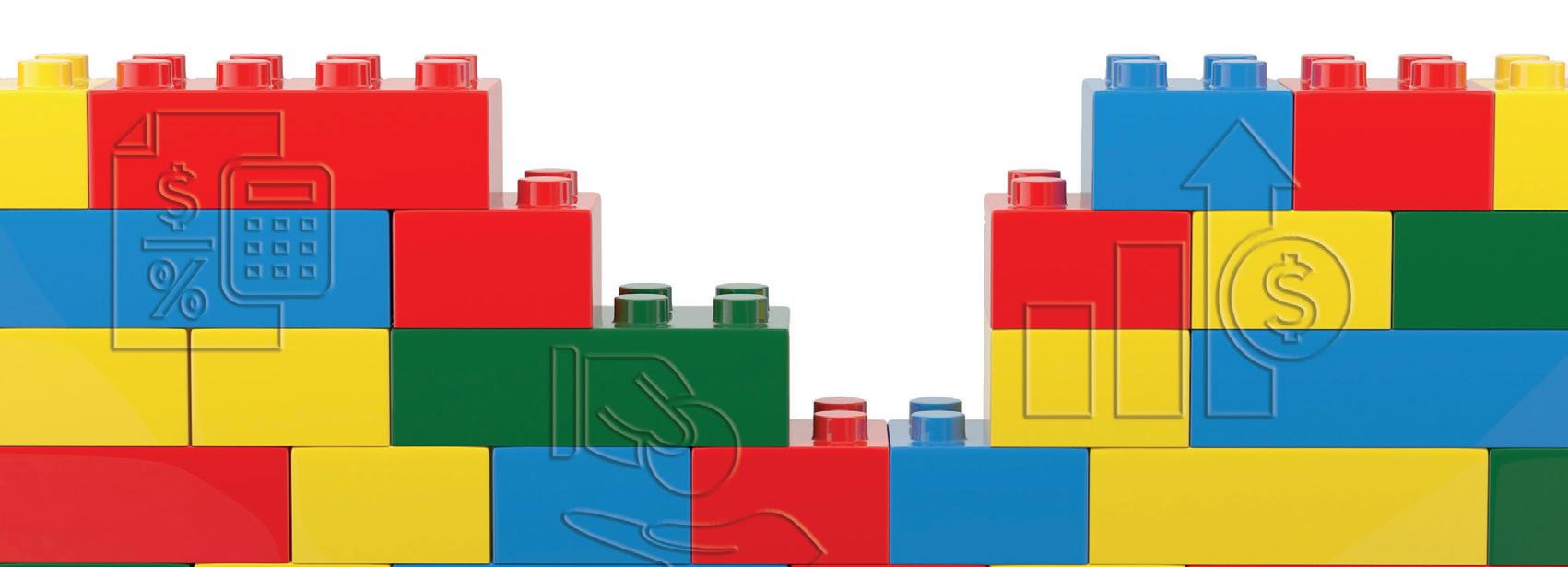
We’ve barely scratched the surface of the inventiveness and innovation that could come around the products as moving money becomes more standardised and more commoditised, which is part of the advantage of a single dataset.
The more that it becomes about leveraging it in the product domain – by integrating evolution and modernisation of the whole banking architecture, operations as well as IT – the more the benefits for corporates will really become apparent. And there will eventually be some big winners among the banks that lead the way in implementing those things.
TPM: What are some of the benefits for corporate clients of banks that embrace ISO readiness earlier than some of their competitors?
SW: There’s a lot of opportunity around the new data standard, not just from an efficiency perspective – which is important, but the exciting stuff is the new services that can be provided around the standard, especially when you’re combining the data with real-time.
As I said, it’s not just about how you process a payment – moving money, in the form of data, from A to B. It’s about how you leverage that in the realm of other products and services that the bank offers. How can you improve the granularity at which you credit rate your risk, from a lending perspective? How can you improve the reconciliation
TPM: What are some of the challenges, and maybe opportunities, coming out of cross-border payments, now that people’s expectation is of real-time movement of money?
SW: ‘Expectation’ is certainly the way to describe it because what we often see is people’s experiences in their lives as an individual, are also transferred to the corporate world. Even when it’s B2B, that’s true of payments, too.
ISO 20022 & CROSS-BORDER: VALANTIC FSA ThePaytechMagazine | Issue 14 ffnews.com
Building out: ISO 20022 will create entirely new structures based on payments data
6
It’s a bit like LEGO bricks. You get your key blocks locked in place – in this case your core technology, capable of handling MX messages – and then add or swap out other blocks to create any number of value-added services






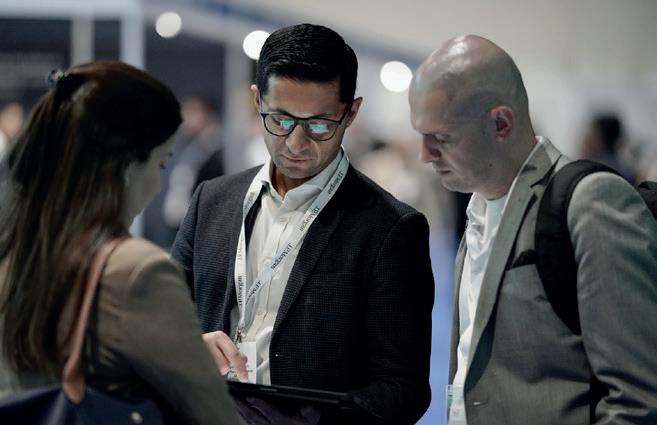



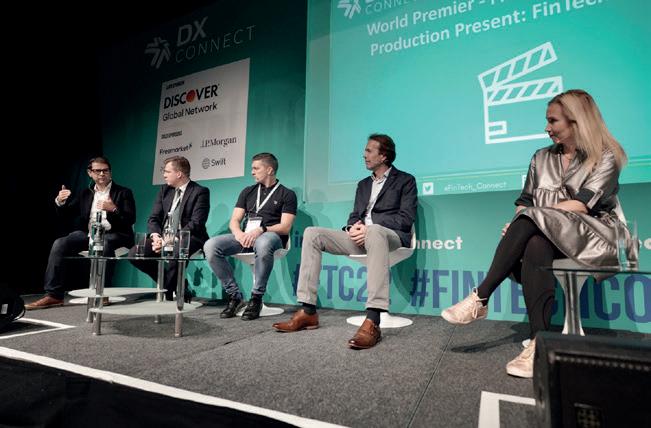



The Global FinTech Ecosystem. C onnected. BE AT THE CENTRE OF THE FINTECH REVOLUTION 6th-7th December 2023 ExCeL London SAVE THE DATE LEAD SPONSORS fintechconnect.com/events-london info@fintechconnect.com SIGN UP TO FINTECH CONNECT 2023 NOW! EUROPE’S ONLY EVENT FOR THE ENTIRE FINTECH ECOSYSTEM HEAR FROM 200+ INNOVATIVE SPEAKERS JOIN 3,000+ FINTECH LEADERS SPONSORS
That expectation of speed is something that the industry has come under a lot of pressure to provide, and I believe it’s made great progress. If you look at Swift, I think the latest figures are something like roughly 70 per cent of the network payments that are cross-border go through within five minutes. Now, that’s not instant, but given the complexities, that’s pretty darn good.
Getting that last 30 per cent – that five minutes down to 30 seconds, or whatever it is – is very challenging, though. It’s challenging operationally to be able to deal with the complexities of real-time and cross-border, but it’s also challenging in terms of the technology change that is needed, and how unsuitable banks’ legacy systems are.
We’ve seen banks take different approaches, at different speeds; some are further on that journey of replacing their core with ISO-native systems, some are doing message transformation around the edge. To be honest, most are doing a bit of both, in different ways. But, ultimately, if we are to realise the advantages of real-time for customers, and of the additional data that the new ISO standard brings into play, then new technology is needed.
It’s needed to make things smoother, more efficient, to leverage that data to provide better fraud and sanctions checking, for instance, and to provide new services. It’s a challenging area, but we see a lot of customers taking a very proactive approach to it.
For me, what’s going to be really interesting is the talk of equality in terms of the credit transfer standard, SEPA, and Instant, and equality in pricing. Now you’ve got something that’s going to trigger demand, because it’s not going to cost more to do instant.
Coming back to what we said before, in the corporate world, it’s going to become much more of an expectation. And that will bring challenges. As the volume shifts, and other services are introduced around things like Request to Pay, that’s going to bring pressure on technology that was maybe introduced as a short-term fix for
some people, as opposed to a robust, long-term kind of capability.
Operationally, dealing with a higher volume of rejects and complications, albeit there should be less with ISO 20022, puts pressure on the back office, too. So the more you can use artificial intelligence and robotics to deal with those exceptions, rather than people, the lower cost and the better it will be.


TPM: You’ve alluded there to real-time payments presenting banks with an even greater challenge when it comes to identifying and preventing financial crime. Is the increased dataset behind an
technology, you can leverage that data, and react to it much more quickly, which means spotting things earlier. There’s a consistency in the data, to help with the checks around sanctions and AML.
So, yes, a general recognition and commonality helps improve efficiency and the quality of what people are doing. But there isn’t any room to be complacent. We’re going to have to keep modernising, to keep ahead of those bad guys.
TPM: ISO 20022 is just one part of the payments landscape – it just happens to be the noisiest one at the moment. What other events should banks be focussed on?
ISO payment really going to help banks combat anti-money laundering (AML) and other types of fraud? SW: It’s always been a race to stay ahead, between the bad guys and the good guys. But the world, from a payments perspective, will now at least be on the same message set. I won’t go as far as saying on the same standard, because there will still be plenty of variations, even within ISO 20022, but it clearly helps when you’ve got the same recognition of what data is there. With the upgrade of
SW: There are things on the horizon, that will be near soon enough. Dare I mention PSD3 and the further evolution of open banking, and how that’s leveraged? And, as I’ve already mentioned, you’ve instant payments in Europe, and the mandate for all banks to do that, which is coming. What I find fascinating is that with a single ISO standard in the cross-border space, there’s the coming together of the last leg – direct connectivity – from a real-time perspective between schemes. And that’s upping the ante.
There’s been an interesting proliferation of different ways to move money globally. Only a few weeks ago we saw Singapore and India link their real-time schemes – two big financial centres, with big populations, so, potentially that’s a huge volume of payments that might go through.
Whether it’s cross-border or domestic, there are also the increasing number of wallets, different mechanisms for payments, and, not least, the introduction of central bank digital currencies, and what that
enable. There is no end of change. And still so much that’s unknown. For us, it’s about helping banks modernise their technology, and have the right foundation of flexibility to be able to react to whatever that future brings, in whatever order it might be. Whatever happens, I think we all know it’s going to be an exciting ride.

ISO 20022 & CROSS-BORDER: VALANTIC FSA 8 ThePaytechMagazine | Issue 14 ffnews.com
V for… valantic FSA is working with banks on a successful ISO 20022 strategy
might
With a single ISO standard in the cross-border space, there’s the coming together of the last leg – or direct connectivity – from a real-time perspective between payment schemes. And that’s upping the ante

Dual purpose: And you thought agile working and waterfall programme management were on different planets…

While it sounds unlikely, combining agile methodology with a deadline-driven waterfall approach worked well for Danske Bank in meeting existential demands on its core payments system. Christian Luckow, the man who leads the teams, explains



Spare a thought for the Nordic banks. They managed the ‘big bang’ migration to payments messaging standard ISO 20022 by Europe’s real-time gross settlement system
TARGET2 in March. But – unlike their colleagues further south, who could catch their breath before Swift begins its transition to the same standard in November – they were already knee-deep in another structural change.
The project, called P27, would have created the world’s first integrated region for real-time domestic and cross-border payments in multiple currencies. ‘Would

have’ because the plug appeared to have been pulled on it in April.
Both the adoption of ISO 20022 and the creation of P27 for Denmark, Finland and Sweden, was in response to the demands and expectations of businesses and consumers who want and require instant, safe and cheap digital payments, especially in the cross-border space.
The pressure of demand for digital payments is exemplified in Sweden where cash was used for only eight per cent of business transactions by the end of 2022, according to the Copenhagen School of Business, while 95 per cent of the country’s 15-to-65-year-olds
have downloaded mobile payments app Swish, which is co-owned by a majority of the country’s banks.
Managing wide-ranging structural programmes like ISO 20022 and P27, while still keeping the wheels on the banking bus and an eye on future developments, like central bank digital currencies, has made for a challenging few months, admits Christian Luckow, who leads Danske’s Core Payments tribe as well as its innovative Payments Centre of Excellence. And it got even more challenging when P27 withdrew its clearing licence application from the Swedish Financial Supervisory Authority,.
10 ISO 20022 & CROSS-BORDER:
ThePaytechMagazine | Issue 14 ffnews.com
leaving no clear indication of what – if anything – will happen next.
“This actually means we are even busier now, as we have to connect directly to the central banks instead of through P27,” says Luckow. “The ‘simplification’ that P27 was supposed to bring is not happening – at least for now.”
Instead, besides ISO 20022, the Danish and Swedish central banks’ implementation of TIPS will drive additional complexity and effort for Luckow’s teams.
That’s not to say he isn’t excited about the major advantages that ISO 20022’s MX-based messaging will have over the existing MT text system.
“The challenge [with MT] is that the data in many cases has to be interpreted,” he told an audience at a Banking Renaissance event earlier this year. “That means more data gets caught up by anti-money laundering checks and by missing data elements. So, straight-through processing goes down, leading to a worse customer experience. If instant payments are not working, we get complaints. The issue is that we are getting more and more volume.”
Speaking outside of the conference, he tells us: “Especially in Denmark, instant payments have been around for quite a while, and are very heavily used. Instant cross-border payments is what people are expecting now. Customers have kind of said ‘why can I make a payment to my sister in the next town within a second, but if I want to make a payment to my sister who lives in Sweden it takes two days? It doesn’t make any sense. It’s only 30 minutes away, across the bridge?’. Which I think is a fair question. But, as you can imagine, with different legislations, different jurisdictions, it’s not easy to do anything cross-border,” says Luckow.
Regardless of what happens now to P27, he has no doubt that the standardised and data-rich formula of ISO 20022 payment messages will eventually be a true game changer. At Banking Renaissance, he cited as an example the challenge Swedish banks currently face in processing batch payments of salaries at precisely a minute after midnight, as decreed by Swedish law.
“Imagine the amount of payments that have to happen at the same time because of that legislation. Today, that’s difficult to fit into a payment standard because it’s plain text files, and, if you introduce a data element, everybody has to use slight
modifications. Whereas, with ISO, because it’s MX-based, you can essentially add optional components, which means the standard can be much more widely used than the ones we use today, and we can start adding much more specific data elements – such as remittance details. That essentially means it’s going to be a lot easier to reconcile payments with invoices. I come from invoice financing, so, for me, this is a godsend and I can’t wait for it to be widely used!”
Then there are the clear advantages to do with compliance.
“There is so much more legislation, a lot more focus on fincrime. That means we are kind of getting dragged in the opposite direction, in terms of being able to service our customers to the level that they are used to,” he says.
ISO 20022 can help streamline that, particularly when it comes to identifying the origin of a sender whose payment has gone through multiple banks before reaching the payee’s. Digging for that data among MT messages to meet compliance, means the customer may well be kept waiting for the payment to clear.

modernising agenda, each demanding very different ways of thinking and working: the waterfall versus the agile approach.
“It’s a very complex environment to work in,” Luckow told Banking Renaissance. “We have part of our business that basically runs on the mainframe… but then we have our fully agile development centre that does everything the way that we now know we should be doing things. Sometimes those two overlap.”
And that’s precisely what they did to great effect in the implementation of ISO 20022. Luckow’s teams managed to reconcile the ‘create fast, fail fast’ methodology of fintech ‘agile thinkers’ with the ‘waterfall’ approach of traditional rigid deadline programme management. And even Luckow was surprised at how well these two apparently antithetical approaches worked together in practice.
“We have established that the agile mindset works incredibly well [in a waterfall environment],” he explained. “We just have to do it slightly differently because we don’t have the luxury of developing things and fixing them on the go. We’re using the agile methodology to still move us forward in the sprint, do incremental improvements, but with a fixed deadline: it has to work by that date, no ifs or buts.
“I think our employees, once they got used to the idea, have quite enjoyed it because one of the challenges that we found as an incumbent bank with agile was ‘if I can always keep reiterating, if I can always be improving, what is the urgency to actually get something done?’
Notwithstanding these and the many other advantages of everyone adopting ISO 20022, the variable speeds at which multiple actors move towards it over the next two years will almost certainly create its own problems, particularly on the Swift network, says Luckow. It’s a situation acknowledged by Swift, which has created a workaround that allows banks to fetch any data missing in the conversion between the old and new formats in order to perform sanctions screening and other tasks.
None of this stuff is easy, but it’s made even more difficult if, like Danske Bank, you’re maintaining a 20-year-old core operating structure while introducing a
“Here, we do have very firm deadlines and the stakes of us not delivering are massive. But combining it with a methodology that means you're constantly moving, constantly improving, works really well.”
Later, he tells us: “We’ve had to change mindset. We’ve had to look at it a lot more strategically, in terms of when so much is changing at the same time, how can we do that efficiently? It also means knowing what we should not be focussing on right now, and then go back to it later.”
Luckow reckons it will take three to four years for the payments industry to stabilise after such a seismic change as ISO 20022. Once it’s fully functioning under the new regime, though, the standard will ‘enable so much more’, he adds.
“Then we can start focussing on the actual customer value again.”
11
ffnews.com Issue 14 | ThePaytechMagazine
We have very firm deadlines and the stakes of us not delivering are massive. But combining with a methodology that means you’re constantly moving, constantly improving, works really well

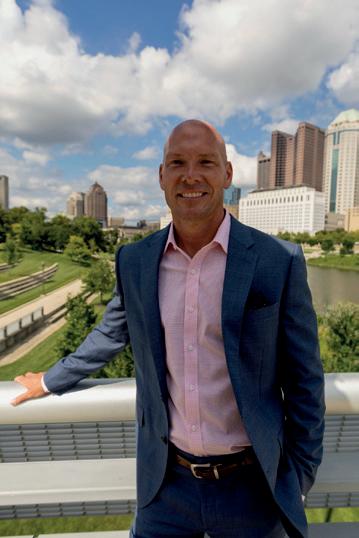
Ohio’s Economic Development Corporation
The world of cross-border payments has long faced a number of challenges, among them security, high costs, lack of speed, and poor transparency.
A further one is lack of uniformity and the need to bridge the disparity between large players and smaller enterprises. Small and medium-sized enterprises (SMEs) will typically experience higher costs because they make smaller transfers, meaning the cost-to-value ratio is much higher.
The goal for cross-border payments is to create fast, secure, cost-efficient transfers that work for everyone, irrespective of who is making the payment and how much is being transferred. Thanks to initiatives such as the G20 Roadmap, the new ISO 20022 standard for exchanging payment messages, and the growing number of real-time systems worldwide, the cross-border payments frontier is moving in the right direction.
Change is also being driven by organisations offering alternative rails, such as Mastercard, which is heavily involved in cross-border innovations.
Alan Marquard is executive vice president of transfer solutions at


Mastercard. “My role focusses on international money transfers, which encompasses businesses such as Mastercard Send [a platform that enables secure, near real-time payment transfers], Global Bill Pay and Cross-Border Services.

“We’re seeing that cross-border is in much greater demand than even just a few years ago and responding to that. People are sending money home more often and in large amounts, and migrant labour is increasing. And since the pandemic, there has been a big increase in digital payments.
“As domestic payments have become contactless and digitised, the expectations for service quality for cross-border payments have also increased.”
However, some customer needs and expectations are non-negotiable. “Security is fundamental,” he says. “That means transaction security, knowing where the money is and that it’s traceable, and, of course, the security of the data itself. Speed of payment is also important, particularly for remittances.”
Marquard contends that the complexity of cross-border payments is sometimes underestimated by users, not least when you compare it with email, where information moves instantly and seamlessly across borders.

“People ask, ‘why can’t I send money as quickly as an email?’,” he says. “When you look at domestic, we’ve really progressed. There are real-time payment systems in more than 60 countries now, and we’re getting used to doing things instantly. But when it comes to cross-border, it’s a complicated, spaghetti-like system.”
Those expectations among customers are not universally the same, of course. While businesses might want integration with accounts payable and accounts receivable systems, people sending money to their loved ones are usually more concerned about the speed of payment, because money is often needed urgently.
Users don’t want an explanation of why it can’t be done, of course. That‘s for the industry to solve. Historically, cross-border payments were mainly used by big corporates making large-value payments via a correspondent banking network. Although that model remains important for high-value payments, it’s not suitable for small-value payments, which is where providers like Mastercard are filling the gap.
“One of the biggest challenges is maintaining a network and having enough reach,” says Marquard.
13 ISO 20022 & CROSS-BORDER: ALTERNATIVE RAILS ffnews.com Issue 14 | ThePaytechMagazine
One of the biggest challenges is maintaining a network and having enough reach… we can connect to 90 per cent of the world’s population
Alan Marquard looks at cross-border developments and explains how Mastercard is helping smaller players navigate the journey
“You need to make payments to a huge number of destinations. In a correspondent relationship, that means having banks in every country and having an individual relationship with each one. Some of the big global players in correspondent banking have de-risked, meaning they have pulled out of jurisdictions they deem high risk because of money laundering, for example.
“We can connect to 90 per cent of the world’s population, with all the related onboarding, know your customer (KYC), transaction monitoring and fraud prevention that goes with it. It involves a lot of technology and there’s a huge operational machine behind it. Liquidity management and FX management are critical, and there’s the whole licensing regime to also take into account. We automate as much as possible, and we’ve
invest in and maintain the infrastructure. The result: they provide their customers with a full-scale cross-border solution, which gives them access to more than 100 markets from a single connection.
“The overall size of cross-border payments is something like $250trillion a year,” says Marquard. “With our cross-border service, we focus on flows of around $23trillion a year, which is a sizeable chunk, and it needs to be managed carefully.
“Remittances, in particular, have a crucial impact on people’s lives, so promoting financial inclusion is very important.”
CLIMATE FOR CHANGE
Regulations have helped to encourage innovation, and there has been a concerted effort to create a framework for
are linking payment systems with QR interoperability, so now you can make purchases in another country on QR codes, and it gets processed through your domestic instant payment system, and then on the other side.”
Requirements such as KYC, AML, messaging standards and data rights sit in the private sector, and this is where it gets complex, as you need everyone to be aligned for cross-border payments to work smoothly. Liability is an issue when there are different KYC standards in the payment chain, and because the checking process is more onerous, it slows down payments and increases costs.
So what effect will ISO 20022 have? Does Marquard view it as a panacea for cross-border payments?
“In its own right, ISO 20022 is a really
International co-operation:
Project Nexus is a blueprint to connect multiple instant payment systems
taken a really big step recently with a new tool called Cross-Border Services Express.”
It enables financial institutions to seamlessly set up an international payments offering for their customers, notably the consumers and SMEs that have long needed better cross-border payments. The Express Service levels the playing field and complements Mastercard’s existing Cross-Border Services offering.
“For a bank that wants to offer crossborder payment services, we offer integration with risk management systems, payment systems, or reporting,” he adds. “A lot of players aren’t API-ready. So, by working with the fintechs Payall and Fable FinTech we’ve devised an easy integration approach. We supply an end-to-end white label service that provides access to our network via a customisable and easy-toimplement interface, and additional high-value services, such as KYC and AML.”

This means smaller banks can do quick and easy integrations without having to
change that goes beyond the standard interpretation of ‘regulations and compliance’. Initiatives by central banks, the G20, and the Committee on Payments and Market Infrastructures, while not necessarily laws, act as a prompt to the private sector. Then you have actual legislation like PSD2, which makes transacting safer and stimulates open banking.
One of the goals of Project Nexus, which sprang from the G20 Roadmap for improvements to cross-border flows, was to create an interlinking proposition and standardise the way the growing number of instant payment systems connect.

“Project Nexus has got the industry focussed on interoperability and there’s a lot of innovation now,” says Marquard. “Take Singapore, for example. They
good thing,” he says. ”However, remember that the big players are the early adopters, while there are plenty of small institutions that aren’t there yet. So, we have a translation layer to take payment instructions in any form.
“The other thing about ISO is that everybody thinks it is a kind of universal, harmonised standard in its own right, but it’s being implemented differently and not e veryone has all the information that needs to be input to minimise failures.
“Safety, trust, and simplification of choice are what I would like to see above all,” he says. “That’s the proposition we’re building at Mastercard. Our strategy is to provide a multi-rail offering, process all transactions easily and securely, and continue to inspire trust in our brand.”
14 ISO 20022 & CROSS-BORDER: ALTERNATIVE RAILS ThePaytechMagazine | Issue 14 ffnews.com
Safety, trust and simplification of choice are what I would like to see above all. That’s the proposition we’re building at Mastercard
You deliver the experience, we power the payments. Seamlessly embed financial services into any user journey with our suite of functional APIs. eps.edenred.com Accounts & Payments Card Issuing Processing
Hailed as having the potential to revolutionise cross-border payments, the financial messaging standard ISO 20022 is set to unify the global financial industry once and for all through a common language for communicating the world’s transactions.
Already the most widely adopted financial messaging standard globally, 2023 is seen as the year in which it begins to achieve critical mass, enabling the speedy transfer of financial information – from payments to trading securities –practically everywhere by using a format in which the information accompanying a payment is less likely to get garbled or lost in translation. But not just that.
In the almost 20 years since the standard first became available, technology has advanced to unlock potential added-value services, unimagined at the time of ISO 20022’s introduction. By leveraging the
additional, much richer information that can accompany a payment in the ML format, it is envisaged that cross-border payments will not only reach the same speeds as instant domestic payments – the transparency afforded by extra data substantially reducing delays in, for example, sanctions screening – but also unlock a host of added-value services for clients.
Among the big players now signed up to the standard are the Bank of England, which moves its Clearing House Automated Payment System (CHAPS) along with its Real-Time Gross Settlement System (RTGS) to ISO 20022 in June, the Single Euro Payments Area, whose settlement system TARGET2 transitioned in March, and payments messaging infrastructure operator Swift, which began its phased migration in November.
In the US, while anyone using The Clearing House’s (TCH) real-time payments (RTP) service will already be on ISO 20022, TCH has delayed the migration of CHIPS – the largest private sector USD clearing system in the world – to 2024, so it can observe the experience of systems that have already migrated.
This year, too, the Federal Reserve’s new instant payment system, known as FedNow, will be launched using the standard. A recent Mastercard review of 61 other real-time payment systems around the world found almost two-thirds were based on ISO 20022.
We asked Marc Recker, global head of product – institutional cash management

at Deutsche Bank, to reflect on the journey so far and what might lie ahead.
THE PAYTECH MAGAZINE: Can what has happened to cross-border payments be described as a revolution?
MARC RECKER: Not a revolution, but a necessary evolution, which kicked off in 2017. Back then, some leaders from transaction banks, under the orchestration of Swift, came together and said ‘we need to change’, because there were very competitive pressure from fintechs.
If we hadn’t done something, clients would have left us. And that was where the industry, in a record timeframe, brought out a product called Swift gpi, that brings transparency, speed, and better client experience as a service.

It was a huge success because the industry embraced that change and because of the increased collaboration among industry peers in the market, and the willingness to continue to drive the change agenda. That journey is continuing, by focussing on the friction points around payments, not only the payments processing itself.
TPM: What has been the consequence of Swift gpi?
MR: What we did back in 2017 was bring in transparency. And the first result that we could observe is that now more than 70 per cent of all cross-border payments processed through the Swift network are processed in under five minutes. I know it’s not instant, but it’s close to real time, because you cannot underestimate the complexity of a cross-border payment.
Standardtime
16 ISO 20022 & CROSS-BORDER: AN ONGOING JOURNEY
ThePaytechMagazine | Issue 14 ffnews.com
This is the year that the majority of the payments industry pins its colours to the ISO 20022 mast. Marc Recker, Global Head of Product – Institutional Cash Management, Deutsche Bank, says it’s long overdue
With a domestic payment, you are in a single jurisdiction with one regulator. Once you add a different country, and potentially two countries in the value chain, it gets more complex. And we cannot solve that complexity through technology alone. It is also about collaboration with regulators, not only to improve industry technology, but also to improve the respective governance frameworks around cross-border payments.
So it’s a combination. Opportunities are there to bring better services towards our clients, which will bring the feeling of a cross-border payment close to the level of a domestic one, but there are still differences that need to be solved.
TPM: What does global adoption of the standard mean for the industry, and what is it going to mean for Deutsche Bank?
MR: That standard is long overdue. We have been working as an industry for more than 25 years with legacy formats in the cross-border payments space that were no longer fit for purpose. There was
sanctions screening. We have a lot of things that the bank can do better, when the data quality that we get from our clients is better.
So, indirectly, clients are benefitting from a more seamless and improved payment experience. But also there is an opportunity to create better insights into their payment behaviour by using structured data. So there are services that can be built on top of the ISO 20022 migration. But it will take some time.
A lot of financial institutions and market infrastructures have been working on ISO 20022 for the last three to four years, and some of them saw the March 2023 [TARGET2 transition and the start of co-existence of the old MT and new MX messages on the Swift network] as the hard deadline. We didn’t; it is just the first step of a much longer journey, because, until 2025 [under the Swift migration], it is still optional for certain banks to move to ISO 20022. As of November 2025, it will be mandatory. Then, we will definitely see a huge uptick in the advantages.
TPM: Has that prompted Deutsche Bank to have a conversation with your customers, and what is the likely impact on the roles of their employees and your own?
text [the old MT format for payment messaging], but it works much better with structured data. And that is the piece where we kicked off the process of educating the people around what ISO 20022 is, what the advantages are, but also how it impacts their working lives. Because, if somebody has worked within cash operations for 25 years with a legacy format, and now needs to go, from one day to the next, into ISO, it is a big change. So, education is key, information sharing is key, and also including the whole value chain inside Deutsche Bank, to see how this new format can bring value-added services internally, but also for our clients.
TPM: How do you see the standard changing the payments industry, going forward, and how is it going to change Deutsche Bank?
MR: There are multiple payment initiatives going on across the globe. You can hardly wake up without reading that some blockchain technology will make cross-border payments even better.
not enough space to enter the required data in the way that is demanded by our clients, but also demanded by our regulators. You didn’t even have the space to put ultimate ordering or ultimate beneficiary client.
Whole business models have changed, with, for example, the advent of payment and collection factories. With that ,there was a need to change the rails, something the industry, Swift, central banks and the public sector have embraced.
Deutsche Bank customers indirectly benefit if our own internal processes get better. Because what does ISO 20022 actually bring? It is a combination of more data and structured data. For example, it can achieve better compliance and fewer false positives regarding
MR: We cannot invent data. We get the data from our clients. So, clients absolutely need to be on board, and especially the big-volume clients for cross-border payments, because they will need to adapt their static data on their own system to be able to send us the structured information we require to be able to benefit from all the advantages. So it’s education, and also a bilateral collaboration between the banks and their respective clients.
With respect to your second point, ISO 20022 allows you to automate many more processes. For example, we already have a lot of robotic process automation (RPA) in the industry. That works on free
ISO 20022 <KEY MIGRATION DATES>
We, of course, look into these initiatives but we try very much to combine our thought leadership and our experience with the new technology. Because you cannot solve all the problems simply by technology. You need governance, you need processes; you also need to know what the problem is, what it is that the client wants. Sometimes I have the feeling somebody has a solution, but they don’t have the problem.
So, at Deutsche Bank, we watch the market and, where we believe it makes sense for us and our clients, we work on initiatives that will try to improve the cross-border payments experience in the future without disrupting the relationship with our clients.
We will look across the ISO 20022 journey, to see what kind of client demands arise that we are not aware of today, embrace those, and collaborate or co-create solutions with them.
<Nm>TARGET2> <Nm>BankofEnglandCHAPS> <Nm>FederalReserveBanksFEDNow>
<Dt>MARCH2023> <Dt>JUNE2023> <Dt>SUMMER2023>
<PstlAdr>Europe> <PostlAdr>UK> <PostlAdr>USA>
<Nm>Swift> <Nm>BankofEnglandRTGSSystem> <Nm>TheClearingHouseCHIPS
<Dt>MARCH2023> <Dt>JUNE2023> <Dt>2024>
<PstlAdr>Worldwide> <PstlAdr>UK> <PstlAdr>USA>

17
ffnews.com Issue 14 | ThePaytechMagazine
We have been working for more than 25 years with legacy formats in the cross-border payments space that were no longer fit for purpose
THE PAYMENTS CHAMPION

Standard Chartered is actively working with alternative payment providers to operate in its franchise markets. Anurag Bajaj explains why the bank is a flagwaver for paytech

In Asia, the Middle East and Africa, predominantly young, mobile-first populations are powering an explosion in non-cash retail payments.
Propelled by changes in behaviour during the pandemic, McKinsey predicts payments volumes will continue to increase by 15 per cent every year between now and 2026 in emerging markets such as these. No wonder so many global paytechs are queuing up to further their market expansion, while local companies are keen to expand regionally, too.
That puts Standard Chartered in an enviable position, because it has a wealth of experience working in these markets and navigating their financial regulations. It openly welcomes third parties to use its digital rails and infrastructure to move money.
“Standard Chartered covers a very significant proportion of the world’s population in our franchise markets,” points out Anurag Bajaj, Standard Chartered’s global head of banks and fintech. The bank’s model for capitalising on the growth of digital payments is one of partnering and working closely with fintechs that are seeking access to local payment infrastructure for the ‘last mile’ delivery of funds, Bajaj
explains. In this leg of the journey, automation is needed to drive customer growth and financial inclusion.
“We look to understand the business model of our fintech clients and evaluate that against local regulatory requirements,” Bajaj adds.
He notes that around 40 per cent of adults in low- and medium-income countries transacted digitally for the first time in 2022, pointing out: “This is only possible if you have companies focussed on automating the experience, end-to-end.”
Despite the heightened pace of activity in Asia, Middle East and Africa in recent years, he believes there is still plenty of uncharted territory to cover.
"In more established markets with big, dispersed populations and large rural areas, there is significant room for further adoption of financial services,” he says.
“India, Bangladesh, Indonesia, Pakistan and Nigeria are prime examples.”
Meanwhile, what Bajaj describes as ‘national champions’ in digital payments are maturing and spreading their wings.
“Fintechs operating in UAE, for example, would like to operate in markets such as Saudi Arabia and Egypt. We are being approached with propositions for these countries. If a fintech wants to operate in Asia, they don’t want to deal with six or seven different banks across the markets they want to launch in.
“They probably want to deal with one bank, and our footprint lends itself very well to being that bank. We may not have the nimbleness of a small local player, but we have invested heavily in infrastructure to deliver a seamless experience for digitally native companies.
“If we can’t originate the payment, we would like to intermediate it, because this gives us a whole lot of add-on value, which, over time, becomes quite significant,” adds Bajaj.
An example of such a collaboration was the launch of a cross-border remittance service for Alipay HK and GCash, so Filipino workers in Hong Kong could wire money to their families back home and make it available instantly. The system
PAYTECH FOCUS: THE ROLE OF BIG BANKS ThePaytechMagazine | Issue 14 ffnews.com
Regional fit: The growth of paytechs in Africa, Asia and the Middle East is an opportunity for big banks
18
If we can’t originate the payment, we would like to intermediate it, because this gives us a whole lot of add-on value,, which, over time, becomes quite significant
used blockchain technology and Standard Chartered provided the underlying banking infrastructure.
“The exciting bit is that the remittance wasn’t even delivered into a bank account, it was delivered directly to digital wallets,” explains Bajaj. “So it was instant and cross-border, and the infrastructure was completely bespoke.”
Other tie-ups include an investment by Standard Chartered in Singapore’s blockchain-driven clearing and settlement platform Partoir. Under a deal struck last November, the bank will use Partoir’s blockchain expertise for its wholesale payments and settlements network worldwide.
Beyond these bespoke products for specific clients, Standard Chartered has moved into services delivered via API – for example, its Payouts-as-a-Service solution, which was also launched in November and is proving quite useful for marketplaces. It allows businesses in the UK, UAE, India, Malaysia and Singapore to manage (among other features) one-to-many payments efficiently. Clients provide details of transactions as they occur, such as a purchase or sale made on an e-commerce marketplace, alongside preferences around who, when, how and how much to pay. The bank then executes these payments without the need for separate instructions from clients or their counterparties, saving time and money.
Bajaj explains that the bank’s fintech strategy is similar to that of its global subsidiaries arm, which provides banking services to foreign subsidiaries of multi-national corporations. Scale is important. Standard Chartered primarily works with fintechs that are international, or regional and national champions in its footprint. One key reason for seeking the more established players, he says, is that they ‘are there for the long run and
therefore understand the importance of embracing regulatory requirements’.

“We have seen firms for whom compliance frameworks and money laundering responsibilities are seen as potential constraints to innovation, but we always emphasise the importance of innovating within the sandbox of rules.
“For example, we worked with a large international household fintech, and helped them revamp their whole know-your-customer (KYC) processes so that their standards could match those that the local regulators expected, to the extent that almost any bank would now be delighted to bank them.
“We have many examples like this where we have worked with fintechs that are not naturally active in our
“With sanctions or financial crime, the more data you have, the better you are likely to get at pinpointing breaches,” says Bajaj. “By intermediating different types of payments from various channels, we can build knowledge bases necessary to conduct far better surveillance to protect the banking system. All these tools don’t necessarily exist today, but through advances in machine learning, we can use the data to deliver trained models that are better equipped to find the needle in the haystack.”
Looking ahead, Bajaj believes fintechs and banks will stay in their lanes – fintechs innovating use cases for digital technology around payments; and banks providing the underlying infrastructure.
He says: “New use cases and the growth of existing ones will be for fintechs to address. Because banks have indeed ceded some ground to them. But we [as banks] need to ensure our infrastructures are suited for fintechs to operate on. That includes investing in exporting more services digitally, linking to real-time payment infrastructures, keeping track of innovations such as blockchain and central bank digital currencies to assess and decide on which areas to participate in.”
markets and enabled them to operate and compete in our footprint.”
There are clear advantages for a fintech partnering with a bank, but what’s in it for the bank? Bajaj says that, once payments partnerships are in place, banks benefit from the flow of transaction data, one application of which could be to improve anti-money laundering detection. That is particularly significant for a bank that has made public its determination to come back from past missteps to become a leader in shaping security for the banking system.
He highlights particular opportunities for growth around digital media and gaming, as the in-game and in-app purchase space has grown dramatically. But keeping track of all these potential payment streams is not without challenge.
“There is huge potential for innovation for both fintechs and banks… but we must avoid becoming distracted, so choosing specific areas and excelling at them is most important.”
ffnews.com Issue 14 | ThePaytechMagazine
19
New use cases and the growth of existing ones will be for fintechs to address. Because banks have indeed ceded some ground to them. But we need to ensure our infrastructures are suited for fintechs to operate on
Moving fast to change things
Will crypto come of age in a new era of regulation? Amanda Shoffel, Bitstamp’s Chief Compliance Officer, has high hopes
Of all the financial innovation to have taken place this century, crypto occupies a space of its own, far out in the left field. Its founding myth, its faceless architect, the anarchy latent in its decentralised vision, all conspire to achieve what punk did in the 1970s –horrifying the adults.
But everyone has to grow up eventually. The Stranglers went on BBC TV’s Top Of The Pops. Johnny Rotten appeared on Question Time. And the crypto market, for all its radical swagger, now looks ready to cross the aisle, too – embracing rather than frustrating the regulatory bodies it has for so long eschewed.
The warmth of that embrace might betray the chill felt during the ongoing crypto winter, with crypto markets losing more than $2trillion since their November 2021 peak. Faith is waning, too: victims of crypto hacks and scandals lost $3billion last year, up from $2billion in 2021, and three in four Bitcoin investors are now in the red, according to the Bank for International Settlements. A February report from JPMorgan, meanwhile, found that 72 per cent of institutional traders ‘have no plans to trade crypto’ in 2023.
Crypto service providers are notoriously bullish, but while hot air alone won’t thaw this deep freeze, regulation might. That’s the view of Bitstamp, the crypto exchange, which has placed security, transparency, and regulation at the heart of its approach since 2011.
“We see regulation as very much part of the business, something that drives the business,” says Amanda Shoffel, Bitstamp’s chief compliance officer. “The more the market is stabilised, and

the more people put trust in crypto, the more we can spread adoption of crypto.”
Based and licensed in Luxembourg, Bitstamp is a compliance trailblazer in the crypto space, having been fully audited by a Big Four accounting firm since 2016. Today, 29 per cent of its workforce is devoted to risk management and regulation. Bitstamp keeps 95 per cent of its crypto offline, in bank-grade, Class III vaults – yes, just like the ones in the movies. Caution and care lends Bitstamp credibility, and better, tighter regulation will do the same for the entire crypto market, it believes.

In the US, many crypto-asset service providers have been crying out for regulation for this reason, with limited success. In February, crypto-focussed
securities, the other as commodities. It’s a regulatory mess.
The neatest regulatory intervention for the crypto space has been the extension of anti-money laundering rules to cover digital assets. In the UK, the Financial Conduct Authority (FCA) currently has some remit to check that crypto-asset firms have the right procedures in place to spot and report wrongdoing. But in April, members of the European parliament voted in favour of the Markets in Crypto Assets (MiCA) regulation, which will be the world’s first comprehensive regulation for the crypto sector, giving most firms much-needed clarity –although it will require institutions to conduct due diligence checks on large transactions and ban anonymising tools and privacy wallets.
“Regulation and know-your-customer (KYC) will help scalability because it will combat harmful stereotypes that crypto is only used for illicit purposes, or used primarily for money laundering purposes,” explains Shoffel. “So the more regulation around KYC that we have, the more trust people will have in the product, and the more comfortable they’ll be including it as part of their financial portfolio.
Custodia Bank had its application to be supervised by the US Federal Reserve rejected for the second time. In March, two separate US agencies – the Securities and Exchange Commission and the Commodities and Futures Trading Commission – sent warnings to Coinbase and Binance, respectively. One sees crypto-assets as
“But KYC isn’t enough, on its own, to combat fraud and money laundering. Firms really need to have transaction monitoring. They need up-to-date information, they need to make sure that the information that they’re seeing, or that they have about the customer, is consistent with the transaction types, and if it’s not, all those things can trigger an investigation into suspicious activity.”
All that seems reasonable, but doesn’t it
20 CRYPTO & BLOCKCHAIN: REGULATION
ThePaytechMagazine | Issue 14 ffnews.com
Transparency helps put an accurate value on crypto and on assets in the marketplace. So, you reduce the likelihood of pump-and-dump schemes, or of exchanges issuing their own tokens that are hard to value
Star performer?: Crypto firms hope regulation will bring credibility to the market
meet in Hiroshima, Japan, to hammer out the details of a joint regulatory strategy.
Still, it’s likely that the EU’s new framework will set the course, just as Europe’s General Data Protection Regulation (GDPR) reached far beyond the bloc’s borders following its 2018 implementation. MiCA will have a phased introduction but appears to be as comprehensive
that have gathered over Silicon Valley Bank, Credit Suisse, and others in recent months. The IMF has referenced the ‘crypto contagion’, while Belgium’s former Minister of Finance, Johan Van Overtveldt, recently termed crypto ‘speculative poison’ that ought to be banned outright to help shore up confidence in the banks.
We’re seeing these fears, which are without causal evidence, play out in real time. When Flagstar Bank, a subsidiary of NYC Bank, stepped in to rescue the failing Signature Bank in March, it did so without purchasing Signature’s considerable digital assets business, which includes its crypto activity. The key concern here is the depositor selloff – the crypto market’s equivalent of a bank run, and the phenomenon that felled FTX. Transparency and trust are things Bitstamp takes extremely seriously.
fly in the face of the crypto dream?
“Yeah, the downside is that KYC can be a touchy subject, especially in an industry that’s built on the founding principles of privacy and permissionless transactions,” says Shoffel. On the other hand, many crypto-asset investors aren’t in it for the vision but for the bounty. They’re likely to welcome moves to tame the Wild West status quo, especially if they’re made a regulatory requirement.
In any case, regulating a global market throws up issues familiar to readers of this magazine. “One of the problems we face in crypto is that regulations are not as standardised [as we might like],” says Shoffel, “and it really depends on not just the location of the firm or exchange, but the products that it’s offering, as to what KYC we should, can, and do collect.”
The supranational institutions are moving through the gears on this, with the Financial Stability Board, the Bank for International Settlements, and the IMF collaborating to publish guidelines. In February, the G20 announced its collective bid to standardise digital asset regulations; in May, the G7 was due to
as its digital privacy predecessor. The regulation is aimed at protecting consumers and investors, supporting financial stability, and promoting innovation in crypto-assets. And it comes with fangs: proposed fines for breaches of €5million, or between three and 12.5 per cent of annual turnover.
"One of the requirements is to issue a white paper on any token that’s being issued in the bloc, including things like who the issuer is, the team behind it, the technology underlying it, the protocol and consensus mechanisms used – even things like its impact on the environment,” says Shoffel.
“When people are more educated, and more aware of the questions they should be asking, they’re less likely to fall for scams. And unfortunately, because of the economic downturn and inflation, scams are way up.”
Some commentators have seen the spectre of cryptocurrency in the clouds

“Bitstamp has been audited since 2016,” says Shoffel. “We hold all assets on a one-to-one basis, and we have for quite some time. Exchanges are rushing to get proof of reserves to show that they are holding customer assets. But a proof of reserve is just a snapshot in time. You don’t know if they are being lent out to somebody else, or if they’re being moved into a different account. That’s why a full audit is the best way to be transparent about customer funds.”
And that would deliver an additional benefit to consumers, as Shoffel explains. “Transparency helps put an accurate value on crypto, and on assets in the marketplace. So you reduce the likelihood of pump-and-dump schemes, or of exchanges issuing their own tokens that are hard to value. On an open market, where buyers and sellers can determine value with information that they possess, it’s a more even playing field for everyone.”
Transparency might be anathema to strict crypto-evangelists, but letting the light in might be the market’s best chance of experiencing a new dawn.
And, if the cost of survival is assimilation into the mainstream, expect to see even the most crypto investors amending their principles – even if they retain the digital regalia of a rebel.
21
ffnews.com Issue 14 | ThePaytechMagazine
the technology began making headlines more than 10 years ago. Given the relentless hype, that’s hardly surprising. It remains an emerging technology, widely discussed and touted, but is yet to change the world in the same way the internet has.
However, although we haven’t reached the tipping point, the technology has matured enough to support many business applications and has proved its potential across a variety of industries, from agriculture to health, travel and many more.
The core features of a blockchain –namely decentralisation, immutability, and traceability – make it a particularly attractive technology for banks and financial institutions, where accuracy and trust are essential. Potential use cases include payments, securitisation, smart contracts, loans and credit, and clearance and settlement systems.
But, despite the obvious applications, there has only been piecemeal progress to date. Some are more notable than
others. A number of global banks are working with software company R3’s permissioned blockchain Corda, for instance, to provide a discrete number of services. And Ripple, the blockchain-based, cross-border digital payment network with its own cryptocurrency, has ruffled the feathers of incumbent providers with its three-second settlement rate and underlined what a blockchain future might mean for finance.
There are fewer sceptics than there were. In the not-so-distant-past JPMorgan’s CEO Jamie Dimon famously damned Bitcoin as ‘a fraud worse than tulips’ referring to the
tulip bulb asset bubble of the 17th century – before the bank itself entered the space with its own JPM Coin and an underlying permissioned distributed ledger for the instant clearing of multi-bank, multi-currency assets. The sound of backtracking footsteps was deafening.
So, could banking follow other sectors in embracing what many clearly see to be a progressive technology?
A QUESTION OF TRUST
Finboot is a software-as-a-service enterprise blockchain low-code technology company, launched in London and 2017, which began operations in Wales after securing £2.4million in funding in 2021 –including from the country's development bank, which is helping to grow a local blockchain technology hub.
Finboot works with a wide variety of industries with complex ecosystems. Its contribution to chemical giant Sabic’s attempt to increase the circularity of its supply chain, reduce emissions, increase efficiency and save money earned it significant praise in the company’s 2022 third-quarter report.
The report said of the project, which included packaging specialist Intraplás: “This is the first of its kind in the industry to trace the product from feedstock production to converter, going further than previous industry applications of blockchain in end-to-end tracing.” It found the platform delivered reduced costs, time and improved data integration for all the value chain partners.

Finboot’s chairman and co-founder Nish Kotecha has a background in financial services and he sees blockchain as essential to building the Web3 ecosystem, because it provides one critical element.
“Trust is the most important thing,” says Kotecha, “and it’s usually administered through intermediaries. So, for example, if you look at oil, gas, energy and similar industrial supply chains, there are a complex set of processes for each one; and at every junction point, someone will be verifying who the sellers and buyers are.
“Blockchain can provide that assurance because it can administer end-to-end traceability, which is exactly what Finboot’s MARCO platform does.”
Kotecha says that the platform is building trust for customers in Finboot’s principal industries – energy, chemicals, retail, and aviation – but that the same approach could reduce friction in any business where trust and visibility are vital, including finance.
It’s unfortunate, he says, that the crypto use case has distracted from blockchain’s many positive applications and slowed its adoption in the very industry where increased control and transparency are top of the agenda.

“Blockchain and regulation are not mutually exclusive,” he insists. “In fact, blockchain can aid regulation.”

As for the banking industry harbouring
conservative attitudes, he says: “I’ve spent many years in financial services and know that once the industry sees that innovative solutions are available out of house, it will start looking externally for help to innovate.
“Indeed, many financial institutions have completed pilots, such as green bonds that are being administered on blockchain. One of my shareholders, who is in financial services, even recently asked: ‘When will we see full payments being made across blockchain?’ My answer to that is: ‘Very soon.’”
Given their systemically important role, financial institutions are perhaps
CRYPTO & BLOCKCHAIN: TRUST AND TRACEABILITY
ThePaytechMagazine | Issue 14 ffnews.com 22
Nish Kotecha, Chairman and Co-Founder of Finboot, a blockchain enabler, examines blockchain’s role in the financial sector and what it can learn from other industries
It’s fair to say that blockchain has promised more than it has delivered since
understandably uncertain as to what role they can and should play in the blockchain universe, as well as how best to gain value from the technology. Kotecha’s view, though, is that if they don’t hurry up and get on the blockchain bus, they’ll be left out of the Web3 loop.
“A traceable, end-to-end, secure, immutable database is a core requirement in banking and finance,” he says. “In the same way that it can track oil, gas, liquids and other commodities in the industries we currently support at Finboot, it can also be used to control each part of a financial supply chain.”
Education will be fundamental to its adoption, he adds: “As with any new tech, there is a learning curve, and you have to show the return on investment to be confident of investing further and growing the technology. For that, you need platforms like MARCO, which allow organisations to move rapidly from scoping a use case to integrating
applications in a matter of weeks. Faster deployment means significantly lower costs, and you can quickly prove the value of any new application."
Web 3 is predicated on organisations being able to talk directly with their audiences, the blockchain itself taking the place of trusted intermediaries – a role banks have long played in finance.
“But banks are realising that it’s better to be part of the blockchain ecosystem," says Kotecha. And, in his view, they are also coming around to working with third parties that can support developments, rather than to try to own them.
As to the issues of privacy and regulation, which vex many in the industry, he says blockchain could be a very useful ally.
By way of illustration, Kotecha explains: “If you need to trust a supply chain, say in relation to new European environmental regulations, you need to prove provenance.
You can’t do that unless you confirm identity, and to do that you need permission. So, the person giving identity says, ‘I’m happy for you to use my identity’, and then it is encrypted and moved to the next part of the process.
“That’s what blockchain does. It collects permission and data, simultaneously locking them into the same data block, and then you can move forward.”
Kotecha says this is what regulators are looking for and what consumers will demand, and if you’re not preparing to do it today, you’ll have a big problem in five years’ time, because it will probably be too late.
“You need to start using blockchain now,” says Kotecha, “to collect data that will create value tomorrow.”
they could even have made the recently shuttered Silicon Valley Bank a more viable proposition.
“SVB unravelled quickly through a lack of trust. Blockchain can enhance trust because it gives you provenance, and, with the right permissions, transparency and traceability of what’s happening where – unlike any other database today.”
Some time prior to SVB’s collapse, America’s Harvard Forum on Corporate Governance urged the banking industry to come off the fence on blockchain. “There is a historic opportunity for the banking industry to modernise dramatically by incorporating both public and private blockchains,” the authors wrote. “Through a combination of governmental regulation and partnerships between the public and private sectors, the legal uncertainties prevalent in the space can be clarified and the banking industry... can expand its use of blockchain technology to provide more
One of Finboot’s solutions is called MARCO Track and Trace. It gathers and shares data, creating digital product passports and accurate reporting, enabling trusted connections between stakeholders in a supply chain. As well as sharing data with customers and suppliers, businesses can also share data with regulators. And Kotecha says that while you need regulation to administer blockchain in a bank, blockchain also enables banks to comply with regulation. Together
efficient and secure products and services.” Wherever supply chains are siloed and fractured, wherever data sharing is a challenge, Kotecha believes it has a role. “Every business needs to understand blockchain’s capability. To see it as a core technology that is not going away and is the key to success in the future.”

Building blocks?

Despite its potential, blockchain growth within the financial sector has been patchy

ffnews.com Issue 14 | ThePaytechMagazine 23
SVB unravelled quickly through a lack of trust. Blockchain can enhance trust, because it gives you provenance, and, with the right permissions, transparency and traceability of what’s happening where
SEBA Bank’s Mathias
Schütz
Summer visitors to Lake Zug, the picturesque, mountain-ringed hiking hotspot half an hour south of Zurich, are greeted with images of a bygone Europe. The old towns here are a palette of pastel-coloured façades, shuttered windows, and gothic spires that pierce the morning through the lake’s rolling mist.
But all is not as it seems in this chocolate-box landscape. Up in the high Alps whirr modernity’s miners, hacking
into cyberspace. Follow the cables down to the valleys, and you’ll find ordinary citizens accustomed to paying their taxes in cryptocurrency. And, in June, the world’s blockchain elite will descend on the quiet lakeside village of Rotkreuz for the fifth iteration of the Crypto Valley Conference.
Across the water lies Zug, the town at the heart of this liberally regulated Swiss canton, which is fast establishing itself as the global crypto capital. In 2021, its top 50 companies, which include Ethereum and 14 unicorns, were valued at $611.8billion. And with Zug town hosting half of the

region’s blockchain companies, it’s as close to the pulsing arteries of decentralised finance as one can get.
It’s why SEBA Bank chose to be based there. The ‘bank for the new economy’ became one of the first two digital asset banks in the world – both Swiss and licensed within days of each other in 2019 by the Swiss Financial Market Supervisory Authority (FINMA). While the other, Sygnum Bank, chose Zurich as its base, SEBA set up headquarters in the very building where Zug’s crypto revolution began.
“It used to be the town hall,” says Mathias Schütz, SEBA’s Chief Client Officer for the EMEA region, speaking below its beautiful timber roof. “It’s more than 500 years old, but it’s in line with our history because we’re trying to build a bridge between traditional finance and the new economy of digital assets.
“This town hall was where the first Bitcoin transaction for government services happened – meaning the citizens of Zug were able to pay their tax bills in Bitcoin. Now, we have our premises here.”
Dolfi Müller, the town’s mayor, spoke to Deutsche Welle in 2016 about his administration’s new crypto policy, proclaiming: “With Bitcoin, we’re sending a message: we in Zug want to get out in front of future technologies.”

Today, its inhabitants can pay taxes of up to 100,000 Swiss Francs (£89,000) with Bitcoin or Ether by following a QR code sent to them by the tax authority. Those transfers are then immediately converted into Swiss
Francs by the local service provider Bitcoin Suisse, protecting tax receipts. A handful of US states, including California, Colorado, and Arizona, have since introduced legislation similarly enabling inhabitants to pay for government services in Bitcoin, but little Zug’s Crypto Valley got there six years before Silicon Valley.
As for Müller’s rallying call, it had a halo effect – Zug ranked eighth in The Expat City Ranking list in 2019, with the highest quality of life score globally. Initial coin offerings and incorporations have boomed. The medieval fishing village is having a blockchain-driven renaissance.
Back in SEBA’s headquarters, Schütz points to the floor. “Downstairs, we have designed our own vault for the cold storage of digital assets, in a very highly secure manner, using NATO-grade infrastructure.” Gold bullion and priceless fine art are
what you find in most Swiss repositories: this one contains military-grade TEMPEST computers encased in radio-blocking Faraday Cages that can only be accessed after passing multiple layers of biometric access controls. With computers loaded with cold wallets and stashed with NFTs, it’s a Fort Knox for the digital age.
The trend of vault-building has been taking off across the crypto space, partly due to the spooking effects of recent arrests.
“In the aftermath of what happened with FTX,” explains Schütz, “one thing which is clear is that all digital assets should be stored and kept safe. They are off balance sheet. Here, they are totally segregated, so that, in the unlikely case of bankruptcy, those assets will never be touched.
Valleycrypto kings of the
CRYPTO & BLOCKCHAIN: NEOBANKS
ThePaytechMagazine | Issue 14 ffnews.com 24
explains how a medieval fishing village in the foothills of the Alps is helping to lead a decentralised revolution
“The protected, safe, and secure storage of digital assets has become a top priority for clients nowadays.”
Even if the ancient building above him is vulnerable to the ravages of time, the crypto crypt beneath his feet will persist. Perhaps that’s symbolic, too.
Vaults don’t only grant clients practical and symbolic peace of mind, though. They’re also status markers. SEBA’s high-net-worths (HNWs) expect the red carpet treatment from their account managers and cast iron shielding of their assets.
“We’re trying to be more persona-centric in our offering,” says Schütz. “One thing which we identified is that crypto-wealthy, crypto-savvy people have high demands, so we have to come up with a very bespoke, very personalised service.
“That’s what we have built our Platinum offering, with a platinum credit card, with limits that clients can define with us. We have clients with a limit of half
a million, and we can provide that. We also have a premium desk for clients to contact us at any point using a secure, safe, and convenient communication channel – via WhatsApp, via Telegram, or via WeChat – and a concierge service.”
SEBA opened its first overseas office in Abu Dhabi in February and now has clients in two dozen countries spread across five continents. But it’s not just wealthy private investors that SEBA serves: it provides services for asset managers, pension funds, companies and – increasingly – banks, too.
“Being very close to the topic, having the expertise, knowing how we can do forensic checks on a wallet, is a big asset that we can bring to traditional banks,” says Schütz. “That is quite important for us, because it
allows wealth managers to provide their clients with a digital asset offering. They rely on our compliance knowledge – and in a Swiss-regulated environment, we always have to follow the rules. That gives them the comfort to enter the space.
“We provide a sophisticated expert trading system, and direct access into our trading room. Our trading room is one of the key elements of our offering. We have a broad range of high-quality liquidity providers, but we act as a principal trader, so we are always the counterparty vis-à-vis the client. That way, we are also eliminating counterparty risks for them.”
With banks warier than ever about their exposure to digital assets, SEBA Bank’s
the carve-up of assets following the fall of Silicon Valley Bank and others in the US.
In the last few months, there have been a slew of banks who have withdrawn or limited payments to and from crypto platforms, while others have frozen crypto firms' accounts, leading to what some have called a crypto banking crisis.
SEBA’s newest product is a B2B service for fiat-focussed banks who possibly want to keep their crypto offer at arm’s length.
“Last year was a landmark year for the digital assets industry,” says Schütz. “Maybe not in the most positive manner, but it showed which direction it will go in. Looking back at 2008, what was the answer to the crash? Regulation. In the digital assets world, regulation will step in, too.
“Ultimately, the regulatory piece will come together with decentralisation and the brilliant things that have been developed in this new blockchain world
regulated status is both a confidence-builder and a source of knowledge for banks looking to tentatively explore what is increasingly looking, even to them, like the future of finance.
“We’ve just onboarded a new banking partner to provide digital assets to its clients, and it’s just asked us to educate 300 of its relationship managers on digital assets,” adds Schütz. “We know how to handle risks, and we know how to make sure we can onboard high-risk clients.”
Regular banks began pumping the brakes on crypto activity following last year’s collapses. And their ongoing nervousness was apparent this year during
as well as the traditional world. That’s the direction: more regulation, but also developing ideas in a more scalable and more mature manner.”
Will this better-regulated future finally bestow legitimacy on the market and encourage banks to engage more confidently with digital asset classes? SEBA Bank might be the first to know.
“There are a lot of people that have not yet invested, and have not gone into this market, and so we believe there is also huge potential still to catch up,” says Schütz.
It will be interesting to see if the world’s financial centres, glittering with skyscrapers and abuzz with trading floor chatter, can keep up with little, lakeside Zug.
Appearances can be deceptive: Lake Zug’s sedate façade hides a hive of crypto activity

ffnews.com Issue 14 | ThePaytechMagazine 25
The protected, safe, and secure storage of digital assets has become a top priority for clients


We’re Putting Payments Under the Microscope Discover payments like never before Scan To Get Started © Copyright ACI Worldwide, Inc. 2023 INSIDE REAL-TIME Become a Real-Time Insider Expert insights Growth predictions Success stories Regional challenges Full report and data sheets
Dear CEO... we’ve got you covered
The inevitable has happened. After years of expectation, the UK regulator has come down hard on the payments innovators who have helped changed the face of financial services over the past decade.
Thanking them for their contribution to innovation, service enhancements and customer-centricity, a recent Dear CEO letter saw the Financial Conduct Authority (FCA) issue a stern warning that they had best bring their back offices up to the standard of their appealing shop windows, which are so good at enticing users in with their easy UX and multiple tools – and fast.
Addressed to the bosses of e-money institutions and payments firms in March, the letter acknowledged the ‘competition and innovation we’ve seen in the payments sector, enhancing consumer convenience and value’.
But also listed a raft of areas in which their due diligence is falling short, saying, ‘we remain concerned that many payments firms do not have sufficiently robust controls and that, as a result, some firms present an unacceptable risk of harm to their customers and to financial system

integrity’ – a risk, it added, that was potentially heightened by the current cost-of-living crisis, which has been shown to increase the incidence of fraud.
The missive’s addressees included challenger banks operating under e-money licences, such as Revolut – which had already had its knuckles very publicly rapped for failings at the end of 2022 –and promises ‘swift action’ if firms fail to follow the guidelines.
The three main vulnerabilities they were urged to tackle without delay, or face undisclosed penalties, include their safeguards against ‘inappropriate funds’ related to money laundering, terrorist financing and, since the outbreak of the Russia/Ukraine conflict, assets belonging to those on ever-growing and evolving international sanctions lists; which it said are weakened by ‘inadequate reconciliation processes’ and ‘lack of due diligence’.
The guidance around such things has been gradually beefed up in recent years, and was made permanent in 2021. In response to the COVID-19 pandemic, it requires financial services firms to carry out statutory audits of their safeguarding
procedures, including proper checks of the accounts that funds are held in and due diligence around the customers they belong to, as well as liquidity management, capital adequacy, and robust scenario planning and risk testing.

The Consumer Duty regulation, which is due for to come into force this July, is the latest development focussing minds across the entire financial services industry on best practice. The FCA had already expressed concern at examples of products and services which, it said, do not consistently deliver good customer outcomes and by payment firms who were not acting in customers’ best interests. But in another recent Dear CEO letter specifically about the new Duty, the FCA wrote that it represents ‘a significant shift in our expectations of firms’.
The Duty introduces a more outcomes-focussed approach to consumer protection and sets higher expectations for the standard of care that firms give customers. In the letter, the FCA said that meeting that standard ‘will require a significant shift in culture and behaviour’ by many firms.


27 PAYTECH FOCUS: UK REGULATION
ffnews.com Issue 14 | ThePaytechMagazine
Under pressure: Payments firms are in the UK regulator’s sights
The UK’s Financial Conduct Authority has put payments innovators on notice. Nick Botha, global payments sales manager for AutoRek explains how automation can help firms comply with new regulations
So, there seem to be quite a lot of envelopes piling up on the doormats of payments firms, a reflection of how systemically important they've become to the financial system in the UK over the past 10 years. It’s helpful, then, that specialist payment services providers like AutoRek are there to help these firms plug their regulatory gaps.
Glasgow-headquartered AutoRek focusses on reconciliations for financial services and is currently used by firms operating across the asset management, payments, banking and insurance sectors. Its services are centred on helping firms get control of their data and save time and costs through intelligent automation.

AutoRek’s flagship product is a self-contained financial and operational reconciliation solution that uses intelligent automation to eliminate manual processes, perform matching and analyse breaks. This includes an automated reconciliation platform, which is used by some of the biggest names in global payments. Within this, it says, its safeguarding solution is the ‘first of its kind’, helping UK firms to comply with the new FCA safeguarding guidance.
Nick Botha, global payments sales manager for AutoRek, explains how the company seeks to mitigate critical limitations in companies’ reconciliations systems through its flexible solution.
“We are validating clients’ data, we’re transforming their data, we’re providing an integrity layer to that data, we’re providing the reconciliation elements, that control layer, and all in an automated fashion. We’re a central repository for all their management information and reporting; all within the AutoRek suite,” Botha says.
“When it comes to the compliance and safeguarding elements for payments companies, there are three main factors we help our clients with, which I call the three Rs of AutoRek safeguarding. The first is the regulations themselves, the second is the reconciliation requirements, and the third is the relevant funds identification.

“We are able to assist clients in being very flexible in terms of any changes to the regulations. If there are updates by the FCA, or other regulators, that require them to make changes in the platform, it’s not a time-consuming, expensive exercise. It’s driven at the front-end, users making tweaks and changes, and improvements to the configuration, so
clients can really stay on top of what the regulations are asking them to do.

“With reconciliations, all organisations are required to perform daily internal and external reconciliations, for safeguarding. AutoRek again provides that in an automated, time-saving, and very controlled manner.
“The third element is relevant funds – it’s difficult for a lot of clients to effectively and accurately identify which funds are relevant funds and which are not. AutoRek has the functionality to automate this process, through rules configuration, through the front end, in a controlled environment.”
by performing internal and external reconciliations. And the third was a lack of due diligence and acknowledgement of segregation from credit institutions providing safeguarding accounts. When it comes to this, we have the ability to segregate this data and provide management information (MI) dashboards and reports, per credit institution and per safeguarded account; what the position is, if there is a surplus or deficit in the required and current funds on a daily basis. So, at any given time, payments institutions have a real-time view of whether there’s a surplus or a deficit in their required funds, versus what their current funds are. It covers everything the regulators have identified issues with.”
DON’T FORGET THE CUSTOMER
These systems are tackling the very specific issues highlighted in the FCA’s Dear CEO letter.
“It mentioned a few key factors, when it comes to safeguarding,” says Botha. “The first is firms not having documented processes for consistently identifying which funds are relevant funds – for which I’ve explained what we do. Another was inadequate reconciliation procedures to ensure that the correct sums are protected on an ongoing basis; which is what we cater for
Botha is keen to stress that one thing must still feed into all solution-driven offerings – and that’s the customer experience. He explains: “The end customer journey is at the forefront of everyone’s mind within the payments organisation. It’s not just the front end, it’s all the way to the back end – and if it isn’t, it should be. At the end of the day, customer acquisition and customer satisfaction will drive your revenue growth. It also creates a good brand name in the market for your organisation, and in a very competitive market, you need to make sure that the integrity of your business is looked after, and that customers are saying good things about your business.
“Platforms like AutoRek add value as they can make sure that customer funds are safe. It provides a layer of control for your business, a central repository for all things, end to end, with a complete audit history. This gives your customer confidence that their funds are being looked after effectively.
“Ultimately, speed to issue resolution, making sure that your client funds are safe, and ensuring you’re embodying the newest and best technologies are absolute imperatives.
“At the same time, you need a flexible solution to meet ongoing changes and requirements, across all your different business units.”
28 PAYTECH FOCUS: UK REGULATION ThePaytechMagazine | Issue 14 ffnews.com
We are validating clients’ data, we’re transforming their data, we’re providing an integrity layer to that data
Want to mitigate the impact of incidents before clients come back to chase you?









Need to get a 360-degree view on payments and their context?


Want to enjoy instant access to transaction details?
ING, ING & ING YOUR TRANSACTIONS
Smart, contextual and real time.


Know your transaction (KYT) as deeply as possible




Find the needle in your transaction haystack
Fix the friction in your transaction flow


www.intix.eu
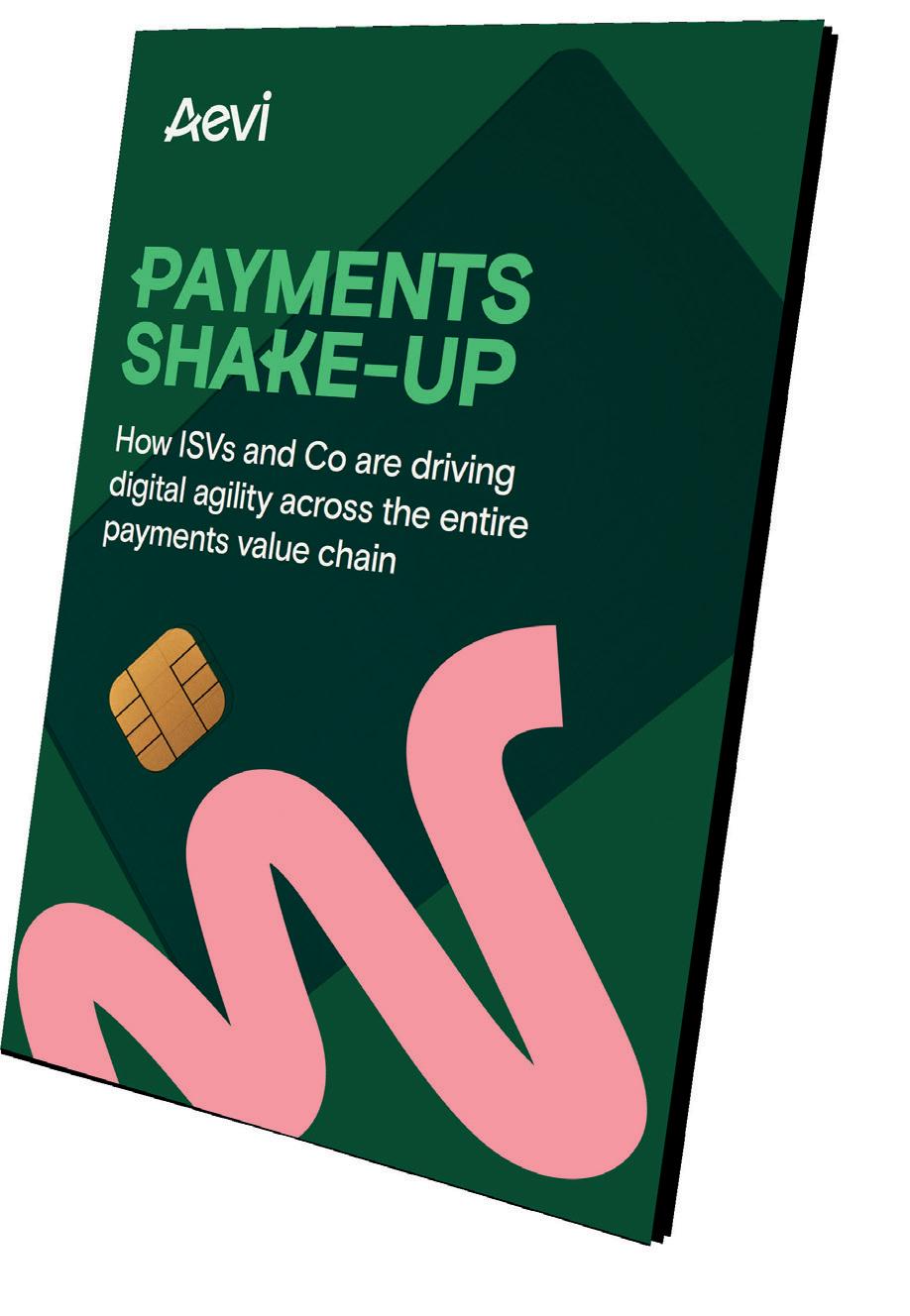

THE POWER OF
PAYMENTS Download our latest whitepaper Scan the QR code to get your free copy
UNLOCK
DIGITAL
At the touch of a button: Sophisticated integrated payment solutions are here to stay

POSand beyond
Steven Stewart, from myPOS, discusses how smaller businesses and ISVs are benefiting from point of sale systems that transform way merchants serve customers

For businesses at the modest end of the spectrum that is small and medium-sized enterprises (SMEs), one click can make all the difference.
They don’t have the resources to manage payment integration and keep abreast of payment regulations. And yet, regardless of how small a merchant is, customers increasingly expect them to deliver the same degree of diverse payment options as those offered by big brand names.
As Steven Stewart, country manager for the UK at myPOS, puts it: “People no longer shop linearly; they often notice a product on social media, then browse through an online store, then finally purchase it in person.”
The necessity for omnichannel retailing that satisfies this new style of shopping, whether that be through cashier-less checkouts, QR codes, kiosk purchases or online payments, has resulted in an influx of providers offering sophisticated integrated payment solutions at competitive prices.
But myPOS has been particularly successful in carving out its niche. It was one of the earliest providers of
payment solutions to smaller merchants, about 10 years ago, and rolled out hardware and software that allows them to take payments in-store and online as the payments landscape shifted, particularly during and after the pandemic in 2020.
Most recently, it’s added Go 2 to its range of myPOS Go devices that allow SMEs to take their business anywhere.
“With solutions like this one, merchants can sell in-store, outside their shop, and on the go – most are doing
People no longer shop linearly; they notice a product on social media, browse through an online store, then finally purchase it in person
deliveries, for example. myPOS Go was followed by the release of a Printing Dock, which turns the device into a two-in-one product, also enabling countertop and printing functionalities.”
Online, too, it’s introduced the myPOS Payment Tag, which allows SMEs to take
payments without needing a website. Payments can be accepted through social media, QR codes or message chats, creating higher sales volumes through safe and secure leads. Once the sale is complete, merchants pay a small transaction fee and get access to their funds instantly – another bonus for smaller businesses who tend to experience tight cashflows.
Serving more than 150,000 merchants operating in 30 European countries, the myPOS Business In A Box solution doesn’t just address the need for comprehensive payments; it also offers a range of financial services with no fixed cost or long-term engagement. It’s a model that seasonal SMEs in particular find very appealing.
In fact, the provider’s entire approach is to wrap its services around a business’s individual needs, the logic being that, by solving pain points for the merchant you deliver a much better customer experience down the line.
“With the right POS system, business owners can achieve a lot; synchronise inventory management, track data, ease staffing issues, introduce unattended automation,” Stewart says.
31 MERCHANT SERVICES: MARKETPLACES & ISVs ffnews.com Issue 14 | ThePaytechMagazine
And, as many SMEs know, one person – the founder – is often wearing all those hats, which can be challenging and overwhelming, and, ultimately, limits growth of the business.
“SMEs don’t have the same internal resources to support the growth that their larger counterparts have,” continues Stewart. “That’s why we’ve built our Business In A Box platform, taking away the burden of managing multiple relationships, integrations and tools and helping merchants reduce inefficiencies.
“Our traditional POS devices are just the tip of the iceberg. When it comes to helping retailers implement new tools, our smart terminals present many more options, as they’re connected to our myPOS marketplace – that’s our app market, where merchants can find applications helping their business to grow.”
The plug-in features are useful for any small business, providing payment links, e-commerce optimisation, checkout functionalities and more. But now myPOS is going further in creating bespoke apps with supply chain partners and with ISVs (independent software vendors).
This year, for example, it helped optimise the distributor operations for Coca-Cola HBC Hungary. Working with IQOM, myPOS’s local distributor, it developed an app specifically for merchants taking deliveries from Coca-Cola drivers. They can now pay the drivers without having to use cash, via instant transfer or via card payment. Transactions are simpler, safer, and faster.
The benefits for ISVs partnering with payment providers like myPOS are not dissimilar from the benefits that SMEs achieve. ISVs can improve their security and user experience by introducing integrated payment software as has already been accomplished by the partnership between myPOS and Autocab.
“Autocab is one of the leading global providers of booking and dispatch software for taxi and private hire companies,” says Stewart.
“We are integrated with their Driver Companion application, which is running on our Android-based devices which, in addition to offering in-app payments, enables cardholders to store their card details within the Autocab mobile
payment solution means there’s one less thing for merchants to worry about.

PERFECT PARTNERS
There are clearly more tie-ups to come: a myPOS’ ‘experience centre’ is set to open later this year in Ireland after the myPOS group secured a single e-money licence from Ireland’s Central Bank for its European operations. The centre will further develop integrated solutions for businesses by linking merchants, suppliers and technology providers through its marketplace.
Meanwhile, the company has also begun to develop partnerships with big banks who want to offer a superior service to small businesses for whom they are now competing with a range of non-banking providers. MyPOS recently forged an alliance with Raffeissen Bank in Hungary that will allow its clients to access myPOS terminals and benefit from exclusive terminal charges.
Negotiating the fragmented and competitive landscape between customer, SME, ISV, app marketplace, integration platform and bank shows the plethora of opportunities available. And, just as the ultimate customer has high expectations
application, making each future payment effortless.”
Creating integrated payment solutions increases security and speed, reducing issues and saving time for ISVs. Better functionality in payment processes assists in increasing revenue and stabilising cash flow, too. And providing an integrated

from small businesses, so those businesses are developing high expectations from their POS provider in terms of those integrated solution-driven applications and the partnerships they can provide.
As Stewart says: “Small businesses cannot afford to sit idle. Many are painfully aware of the shifting sands beneath them and the need to explore the opportunities of financial technology to address changing customer expectations.”
Omnichannel or bust: Customers and smaller retailers demand a variety of payment options
32 MERCHANT SERVICES: MARKETPLACES & ISVs
ThePaytechMagazine | Issue 14 ffnews.com
With the right POS system, business owners can achieve a lot; synchronise inventory management, track data, ease staffing issues, introduce unattended automation


THE NEW ERA OF TRANSACTIONS
Next-level technology is here – the question is, how do acquirers and merchants use it to their advantage? Chris Kronenthal, President
The stars are finally aligning in the payments space. While there was a vision 20 years ago that shoppers would rapidly digitise with the widespread use of the internet via people’s phones, in reality, the infrastructure wasn’t there for mobile payments, nor was the consumer confidence (or perhaps, even interest).
And while there has been global adoption of mobile payments in all forms, from contactless to buy now, pay later (BNPL), since then, some people still have concerns surrounding its ease of use, personalisation, trust and security.
“The key to all of this is to focus on identity and added services,” says Chris Kronenthal, president of FreedomPay.
“And that’s something you build from scratch. Essentially, we’re entering a new era of payments, so working with the right payments system partner ensures you’re on the right track in meeting your customers’ requirements and that you can unleash the power of pay.”
A ‘CHANNEL AND ACQUIRER AGNOSTIC’ PLATFORM

We currently live in a world of seemingly endless options: when it comes to payments, merchants need to give customers the choice and freedom to pay their way, and this means joining forces with an acquirer who can make that possible, says Kronenthal.
“One of the main reasons FreedomPay is the go-to payments partner, covering 84 per cent of the top 20 acquirers worldwide, including Barclays, Citi, FIS, Global Payments, JPMorgan Chase and Lloyds, is due to it being a single, open, fully agnostic and flexible platform. This allows merchants to unify commerce with

solutions of their choice, and across channels and regions, even simplifying cross-border transactions,” he adds. Beyond acquiring choice, being channel agnostic has worked in FreedomPay’s favour and it has superseded omnichannel, according to Kronenthal.
“The key to success is in how you provide differentiation. You may be on multiple channels, but are they implemented in the best practices for you and your customers? Partnering with an experienced payments platform can help merchants offer an enhanced customer experience in ways that make the most sense for their business.”
ENGAGING CUSTOMERS
Almost every industry has embraced digitisation, and most businesses are no longer strangers to the abundance of new tech we see today. When COVID hit, everything switched to digital, and the question became: how do you engage customers when they’re not coming in-store?
“This is where FreedomPay stepped in with a focus on a consumer-centric platform,” notes Kronenthal. “There is a customer-focussed problem that merchants need to recognise and solve, so it’s all about engaging the shopper and making them feel valued. And if you want to engage a merchant, as an acquirer or payments platform, it’s all about understanding their needs of demand management of the customer.
“Today, shoppers want to be engaged digitally, so merchants who are empowered to select acquirers that can give them what they need to win over their customers in this new space will be the ones who come out on top. This requires a true understanding of what
those needs are [on the part of the acquirer], and this often starts with data.”
GETTING (HYPER) PERSONAL
It’s a new era for merchants and shoppers alike. Companies have the customer data, but many don’t necessarily know how to use it to properly engage people. Merchants need to know how to identify their audience, monitor the way they spend, and create a rich, personalised experience when a customer checks out.
By understanding data around behaviour and analytics, businesses can be presented with opportunities that, if utilised in the right way, guarantee a quality, hyper-personalised experience.
“A platform like ours provides the missing link in terms of data collection,” says Kronenthal. “We have the

technology to track customers’ identity and help acquirers get the most out of their partnership with merchants, as well as provide comprehensive business insights on shopper purchasing habits, which can be used to personalise loyalty incentives.
“This lends itself to an individualised, seamless and frictionless payments experience for all involved – acquirers, merchants and customers. Payments is just an interesting intersection of where all that data comes to life.”
34 MERCHANT SERVICES: PERSONALISATION
ThePaytechMagazine | Issue 14 ffnews.com
of FreedomPay, shares his advice
If you want to engage a merchant, as an acquirer or payments platform, it’s all about understanding their needs of demand management of the customer
While data can be used to create a bespoke customer payments journey, they may worry about what happens to their personal details.
“Working with several of the biggest players in the banking industry has two-way benefits,” Kronenthal continues. “They have a high reputation for trust and security, and we’re the first payments platform to offer PCI-validated, fully functional point-to-point encryption (P2PE) technology in North America, so our customers can rest assured that their information is in safe hands.”


OUT WITH THE OLD, IN WITH THE
NEW Payments have become a major tech contender. Gone are the days when payments technology was stuck in the ‘back office’ – it’s now front and centre, and part of a modern front-desk experience.

While there’s no ‘one-size-fits-all’ blueprint for success, secure transactions and effective personalisation require innovative use of commerce technology. Kronenthal says FreedomPay is uniquely positioned to help acquirers and merchants unleash the power of pay
to reach what the company calls Next Level Commerce™.
“It’s our customers’ data that matters most, whether that’s with their merchant or their acquirer,” he adds. “FreedomPay isn’t Google or Facebook – we aren’t selling your data – but rather, we’re providing the machinery necessary for businesses to run the programmes they’ve always wanted to run, and to do so in an efficient and compliant way.”
Digital transformation is here, and it’s primed to enhance the customer experience. The question is, how well prepared are you for what the future of payments holds?
35
ffnews.com Issue 14 | ThePaytechMagazine

Endless POS-ibilities
Martin Herlinghaus, Director of Corporate Development at Aevi, describes how payments orchestration can empower merchants in and out of store
We feared we were watching the end of in-person commerce in 2020. But nothing could be further from the truth, according to specialist in-person payments solution provider Aevi, which is busier than ever, ‘digitising the last mile’ and bringing e-com flexibility to the world of POS.
So, if it’s no longer about the high street versus e-commerce, where is the battleground in payments, and who are the new and emerging players?
THE PAYTECH MAGAZINE: To set the scene, what are the main trends driving innovation in payments in 2023?


MARTIN HERLINGHAUS: Despite the rise of e-commerce, a significant proportion of retail transactions still take place in or adjacent to the more traditional in-person side of the business.
From our point of view, payments, and the checkout process, have become far more personal, customer-centric, and embedded into the customer journey. This means two things. Firstly, the traditional point of sale has become more mobile, and more interactive. And secondly, the role of payments is being redefined.
It’s no longer just about the transaction itself but also seeing how payments data can help you to understand the customer better. This is exciting because it brings new players into this environment – for
example, device and ecosystem providers (Apple, Google, etc) and independent software vendors (ISVs), who are building solutions to help small businesses engage with their customers.
TPM: What does it mean to digitise the last mile of payments and who benefits from this in the payments ecosystem?
MH: In the commerce and retail world you will see that the digital and physical channels are blurring. You no longer have e-commerce and in-store payments as two separate things, but a more holistic experience. This requires a different level of flexibility that merchants, both online and in-store, have to present to their customers.

merchants want to identify the customer across channels, which is where the problem arises, because in-person commerce is not really designed to share data and reveal more of the customer.
This is where we come in: we want to make in-person payments more open and more programmable. In theory, everybody can be a winner from this, as it’s a systemic problem that we are solving.
In former days, the processor has had to stay with a payment terminal provider, because it was all about efficiency of the payment process and security. Changing providers or integrating new providers into the checkout process is also difficult in different countries, due to different payment regulations. It’s very hard to innovate in this space.
We’re aiming to provide a layer of flexibility to enable the exchange of providers and the introduction of new payment methods. And that’s especially interesting if you have a look at Europe, which is such a fragmented market, where it’s hard for an ISV provider to satisfy the needs of local regulators.
While this is easier on the e-com side, where you have a lot of APIs and a plethora of payment methods, it’s extremely hard on the in-person payments side, because the process is so old and analogue. You go to your point of sale, you check out and that’s it. Nowadays,
In the past, ISVs have also been limited by their back-end providers preventing them from being creative and designing new opportunities for their customers. But now it’s possible for ISVs to exchange those providers and integrate new ones more quickly, giving them the freedom to design the checkout flow as they see fit.
37 MERCHANT SERVICES: POINT OF SALE ffnews.com Issue 14 | ThePaytechMagazine
Opportunity knocks: New payment providers will transform the shopping experience
In-person commerce is not really designed to share data and reveal more of the customer. We want to make in-person payments more open and more programmable
Not only that, but the traditionally minded acquirers and processors can modernise their overall payments estate and bring multiple parts together. Payment service providers (PSPs) from the online world can now jump into in-person commerce and bring their digital expertise to the checkout process. And ISVs can weave their specialty into the physical checkout process as well.
So, the SMEs get better services at a lower cost, and the bigger merchants can now harmonise their in-person and digital commerce, run it centrally, and roll out innovations faster than before.
TPM: How will in-store payments orchestration help businesses and the high street to thrive, even in the light of e-commerce popularity?
MH: SMEs and small retail businesses need to be present in both the physical and digital worlds, so they need to understand their customers better than ever before. Once they do that, on both the digital and in-person side, they can use it to create more personalised and engaging shopping experiences. This could involve sending loyalty invites, offering curbside pickup, or even creating virtual shopping. All things the bigger merchants can offer but it’s now open for everyone.
Ultimately, it’s no longer about high street versus e-commerce. Whether you’re a high street merchant or a digital one, you need both sides of the coin. The physical interaction with your customer is different from the choices you have on the internet. So, you need to play to the strengths of the different channels. People want to buy items online but also exchange them. You need stores to be open for this to work.
Customer and payment data wants to be the same across channels, so you know who they are and what their preferences are, so you can design services according to those preferences.
TPM: How do you see the future of retail, e-commerce, and payments panning out?

MH: Increasingly the payment itself, kind of takes a back seat, because you are paying with the wallet. You see it with Apple. First, you integrated your credit card into Apple Pay, then it was your debit card, and now they’ve introduced buy now, pay later.
At some point, with PSD2, we’ll go to
account-to-account payments. So, they become the overall integrators, and payments feed into this. And I can see the same happening on the merchant side.
Let’s say the customer enables the payment, or maybe even authorises the card to do the payment for them. The merchant will then receive payment, and afterwards say how they want to have it split between bank accounts. So, it’s more of a wallet-to-wallet interaction. And this will happen across multiple touchpoints, whether that’s your point of sale, or soft-POS, or an e-commerce store.
It could also be, let’s say, an EV charger that you interact with or some other service. So, payments become more identity-driven than numbers-driven.
ISV’s have a big part to play in this. They were the first to understand the power of payments data to deliver services towards SMEs. They also saved the day during COVID.
They can now monetise the overall payments journey. This could be interacting with an integrated payments provider, like Stripe, or another PayFac, and at some point, they could become an acquirer. It’s all possible now. This all allows them to gain more control, more responsibility, and grow into this environment.
TPM: Why are these technology partnerships essential for the industry? MH: Nobody can be everything to everyone, otherwise you end up being mediocre. Especially in a world that’s mostly digital. It’s so easy to change providers nowadays that you need to be very, very good at what you are doing. And this is where partnerships come into play.
Partnerships, to a certain degree, are everything. You concentrate on what you are best in, open yourself up to partnerships that enrich you, and create synergies. This is where innovation thrives.
For example, Aevi’s technology enables ISVs and PSPs to be more agile for their SME customers. A lot of providers also believe in partnerships in the same way we do, which makes it easier to connect. These partners allow us to grow with them, and tailor processes together, to then make them available for others, in a more general way.
Not all parties have the same strategic interests, but benefit from what you’re offering to them. And that’s how we are evolving in this environment.

38 MERCHANT SERVICES: POINT OF SALE ThePaytechMagazine | Issue 14 ffnews.com
ISVs have a big part to play in this. They were the first to understand the power of payments data to deliver services towards SMEs. They also saved the day during COVID
Changing channels: Customers have multiple ways to shop
The personal
touch: But traditional methods still thrive

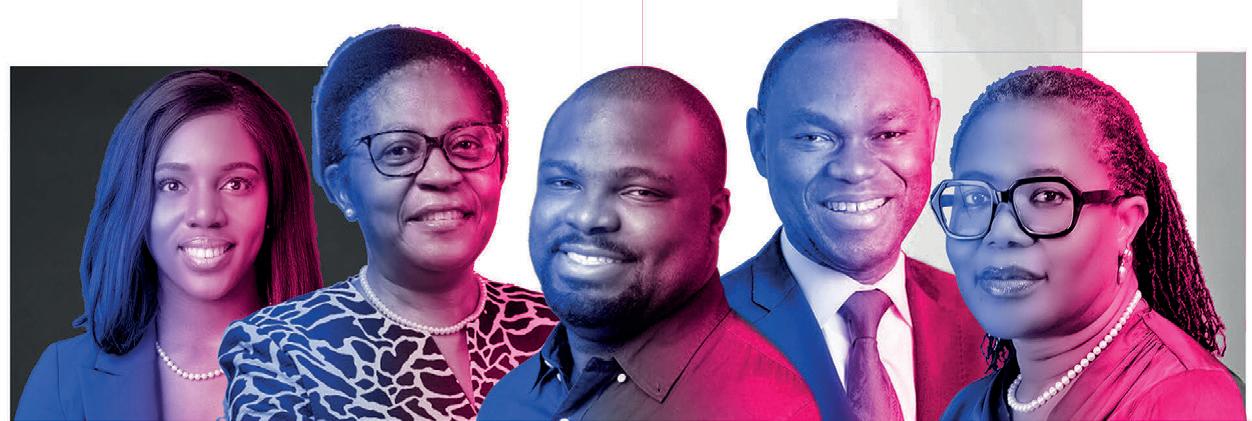

 KIGALI, RWANDA
KIGALI, RWANDA
OPEN OURS ALL
Can the battered UK high street enjoy a revival? If merchants embrace hybrid payments, Emily Fallon of Tyl by NatWest believes it’ll not just survive, but thrive

Everything, everywhere all at once – that’s what consumers expect from British retail. And flexible payment options will be key to providing that hybrid offering from merchants, however big – or small – their turnover.
That’s the forecast from Tyl by NatWest, one of the few merchantacquiring and card machine businesses run by a major UK bank,
The good news is that, despite the impact of COVID-19 and the current cost-of-doing-business crisis, the British retail industry is not in as bad shape as some feared. Like-for-like overall monthly retail sales were up 5.1 per cent in April, compared to negative growth a year earlier, according to the British Retail Consortium and KPMG’s Retail Sales Monitor.
And those figures weren’t all driven by online purchases, which continue to decline across most categories. If anything, there’s been a distinct bounceback from the online migration we saw during the 2020 pandemic. Even major retailers are pouring investment into real estate in 2023, according to the Investors’ Chronicle, following years of strategic retreat.
While the rising cost of maintaining a bricks-and-mortar presence has played into creating retail deserts, a desperate lack of footfall also played a major part.
British consumers have something of a romantic nostalgia for the ‘high street’. A poll for Tyl by NatWest, showed that shoppers wanted to see outlets such as a bakery, a post office, a café, a bookshop and a pub. Nearly three-quarters (74 per cent) were downhearted about their high street’s decline. But just 17 per cent made the effort to do most of their shopping near to where they live or with small retailers. Forty-three per cent said
they only use their local high street once a month or not at all, which might cast some doubt on the 41 per cent who said they were keen to shop more locally to support a high street comeback.
So, given that half of shoppers are, at best, ambiguous and, at worst, disinterested in the British high street, how should smaller retailers respond?
Citing Tyl’s report, Emily Fallon, who leads its customer experience and insights team, believes the future of retail is a hybrid model that everyone needs to get more comfortable with.

“Think about a coffee shop on the high street,” she says, “Maybe someone goes to Broadway Market in London on a Saturday, loves the coffee that they get there, but they don’t live in the area. They google a couple of weeks later, just to see if they can get a shipment of that type
We think ‘what does our customer need from us, but also, what do their customers need from them?’ It’s the intersection of payments which plays a really pivotal role
of coffee, and boom, they discover the café has a website and a payment gateway, or a request for payment links on their social media page.”
It is for these kinds of consumers that Tyl has set up a multi-touchpoint, or omnichannel, capability for merchants so they can maintain loyalty with them, even at a distance.
“It’s for a customer who’s both in-person and online – actually the same person just shopping in different
ways in a fashion that suits that exact moment for them,” Fallon says.
The legacy of the pandemic is that consumers now expect to easily pick and choose which channels they use – instore and online to browse and buy (look first, buy later, digitally or in person) – as well as the payment option that works best for them (be that plastic card, wallet, an Xpay, buy now, pay later, or, increasingly, account-to-account under open banking).
That breadth of choice is a challenge for big retailers, let alone small ones, so having an affordable, easy to onboard and integrate single payment service linked to a management portal that can deal with all the complexity is a blessing.
Launched in 2019, Tyl is competing in the same market as the likes of Worldpay, SumUp, Square and iZettle, offering a range of payment solutions – from countertop and pocket-sized card machines to an online payment gateway and its all-in-one point of sale (POS) system Clover Flex – to suit any size and type of business.
It regularly tops the review charts (its Trustpilot score is 4.8) for its low-cost hardware designed for start-ups: from £6.99/month, plus £14.95 for the payment gateway and 1.5 per cent transaction fees. And it’s especially praised for its customer service, with merchants of varying sizes mentioning how its advisers really understand where SMEs are coming from.
“We like to take a step back and think ‘what does our customer need from us? But also, what do their customers need from them?’,” says Fallon “It’s the intersection of payments which plays a really pivotal role.”
Highlighting how Tyl can support its clients, Fallon quotes the example of meeting the very specific payment needs of a local dentist.
40 MERCHANT SERVICES: SMALL BUSINESSES
ThePaytechMagazine | Issue 14 ffnews.com



41 Issue 14 | ThePaytechMagazine Happier times?: A high street recovery could be fuelled by hybrid transactions
“What we learned is that a lot of customers skip dental appointments, which leaves the dentist out of pocket,” she explains. “So we have payment capabilities that allow dentists to collect deposits at the time of making the appointment. In that way, patients get an incentive to attend and it gives some comfort to the dentist, knowing that, in the event a patient doesn’t turn up, they don’t completely lose out.”
MAKING THE CONNECTION
Connectivity is another big issue that plagues not just mobile traders but also permanent stores, and it’s one that Tyl seeks to solve. Think of a pub with a beer garden, for example, which struggles to take outside payments due to poor WiFi, meaning punters need to go indoors to pay, and are therefore likely to order less.
Tyl’s newly launched Tap to Pay on Android allows customers to turn compatible devices into contactless mobile card readers and accept in-person contactless payments on their own phones.
“We have a range of payment devices that connect to 3G, 4G, Wi-Fi and you can change between all three of them, at any given moment, giving customers extra security when they’re trying to process payments,” says Fallon.
Meanwhile, its rewards programme allows merchants to design their own loyalty points scheme for customers, while also providing real-time insights on customer behaviour. There’s even a Giveback Fund that Tyl tops up for local charities nominated by its traders.
“It’s not just about our relationship with our customers, but the relationships they have with theirs, and how we can help them drive not just better relationships but loyalty, repeat visitors – however that customer wants to shop with them,” says Fallon.
A recent analysis of top small business
trends for 2023 by Experian pointed to earlier research by Sage, which found that eight in 10 SMEs need digital tools to start, survive and expand their business, especially as ‘social commerce, re-commerce and subscription commerce are all expected to grow’ and payment choices change. Digital wallets, for instance, are predicted to account for 30 per cent of all point-of-sale payments in 2023 and BNPL for around a quarter of e-commerce payments by 2026.
Small businesses have long been the backbone of the British economy but they are also a sector that has been woefully underserved by high street banks in the
Mettle, and its open banking merchant payments service, Payit. They are all responding to trends that could propel small retailers into a new hybrid era.
The bank recently announced a strategic partnership with Vodeno Group to create a banking-as-a-service business in the UK to enable non-financial companies to embed products like payments and POS credit directly into their ecosystem. And the appointment of payments data guru Tim Johnson as head of strategy to straddle the development of both Tyl and Payit perhaps points to a fully integrated payments offer to all clients in future – particularly appealing for small retailers looking for a cost-efficient way of giving consumers a variety of payment choices.

past. That gap has been filled by standalone fintechs over the last decade. NatWest has clearly woken up to this reality: Tyl is part of a much wider strategy at the bank, which includes its speedboat digital-only small business neobank,
There is another side to this. In 2022, NatWest opened 99,000 new startup accounts, almost 40 per cent of which were via Mettle, giving it a market share of 16.4 per cent among UK high street banks for banking new small businesses. While that’s encouraging, the real issue in the last few years for small businesses has been their banks’ reluctance to lend. Granular, real-time transaction data – information that can be gathered by services like Tyl and Payit – could unlock new credit models and a more flexible approach to lending. And that really could put the heart back into local retail.
So, what will this future hybrid high street look like? On the face of it, much the same as today, says Fallon, but behind the scenes, things will be very different.
“You’ll still see loads of people in and out of shops, pubs, and restaurants. But you’ll also be able to find them when you’re not on that high street. You’ll be able to purchase things online and even share your local high street with family members who might not live in that area.”
All in hand: New shopping habits require new solutions
Meeting these modern consumers’ demands might be a challenge, but if the alternative is that the high street withers and dies, then, as larger-than-life stuttering shopkeeper Albert Arkwright from BBC TV’s sitcom Open All Hours once said: “I'm goin' to have a d-damn good try, aren’t you?”
42 MERCHANT SERVICES: SMALL BUSINESSES ThePaytechMagazine | Issue 14 ffnews.com
It’s not just about our relationship with our customers, but the relationships they have with theirs, and how we can help them drive loyalty and repeat visitors
We build so you can scale faster
We build so you can scale faster
We build so you can scale faster
Onedigital payments infrastructurewitheverything you needtoglobalise your payment platform.
Onedigital payments infrastructurewitheverything you needtoglobalise your payment platform.
Onedigital payments infrastructurewitheverything you needtoglobalise your payment platform.


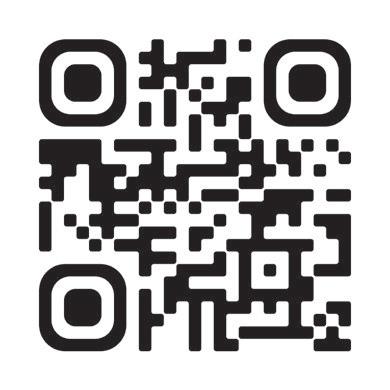






Let's meetat Money 20/20 Europe!
Let's meetat Money 20/20 Europe!
Let's meetat Money 20/20 Europe!
Let’s talk about the next wave in AI, Machine Learning & Managed Services
SmartStream’s fully integrated suite of solutions and platform services for middle- and back-office operations are more relevant than ever – proven to deliver uninterrupted services to critical processes in the most testing conditions. Their use has allowed our customers to gain greater control, reduce costs, mitigate risk and accurately comply with regulation.
With AI and machine learning growing in maturity, these technologies are now being embedded in all of our solutions and can be consumed faster than ever either as managed services or in the cloud.

Simply book a meeting to find out why over 70 of the world’s top 100 banks continue to rely on SmartStream.
info@smartstream-stp.com
smartstream-stp.com

















































































































 KIGALI, RWANDA
KIGALI, RWANDA



















